 Regia Marina: 12 Built 1928-31:
Regia Marina: 12 Built 1928-31:Alvise Da Mosto, Antonio da Noli, Nicoloso da Recco, Giovanni da Verrazzano, Lanzerotto Malocello, Leone Pancaldo, Emanuele Pessagno, Antonio Pigafetta, Luca Tarigo, Antoniotto Usodimare, Ugolino Vivaldi, Nicolò Zeno.
WW2 Italian Destroyers
Poerio | Aquila | Mirabello | Leone | Sella | Sauro | Turbine | Navigatori | Freccia | Folgore | Maestrale | Oriani | Soldati | Medaglie d’OroWW2 Italian Torpedo Boats
Indomito | Audace | Audace(ii) | Pilo | Sirtori | La Masa | Generali | Palestro | Curtatone | Albatros | Spica | Pegaso | Ciclone | ArieteThese ships were built for the Regia Marina as a reply to the large French “contre-torpilleurs” of the Jaguar and Guepard classes of the Marine Nationale. The Navigatori (all named after famous naval explorers) were significantly larger than other contemporary Italian destroyers, assimilimated as “esploratori” or scouts, but re-rated as destroyers in 1938. Apart their larger hull and extra output for better speed and range, they were caracterized by a heavier main armament with three twin dual purpose turrets and new 120mm/50 guns. The torpedo armament was also unusual mixing 450 mm and 553 mm tubes per bank. The artillery was supposed by two rangefinder positions fore and aft. Fast, but unstable they had little room to add extra AA in WW2, where all but Nicoloso da Recco were sunk or scuttled.
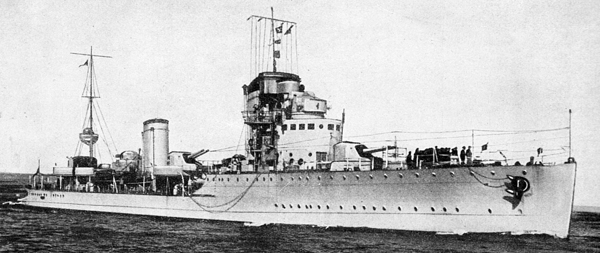
Luca Tarigo, showing her straight prow, later rebuilt as a clipper one. This ship single-handily duelled against four allied destroyers in the difficult escort route between Italy and North Africa.
Design of the Navigatori class
Context
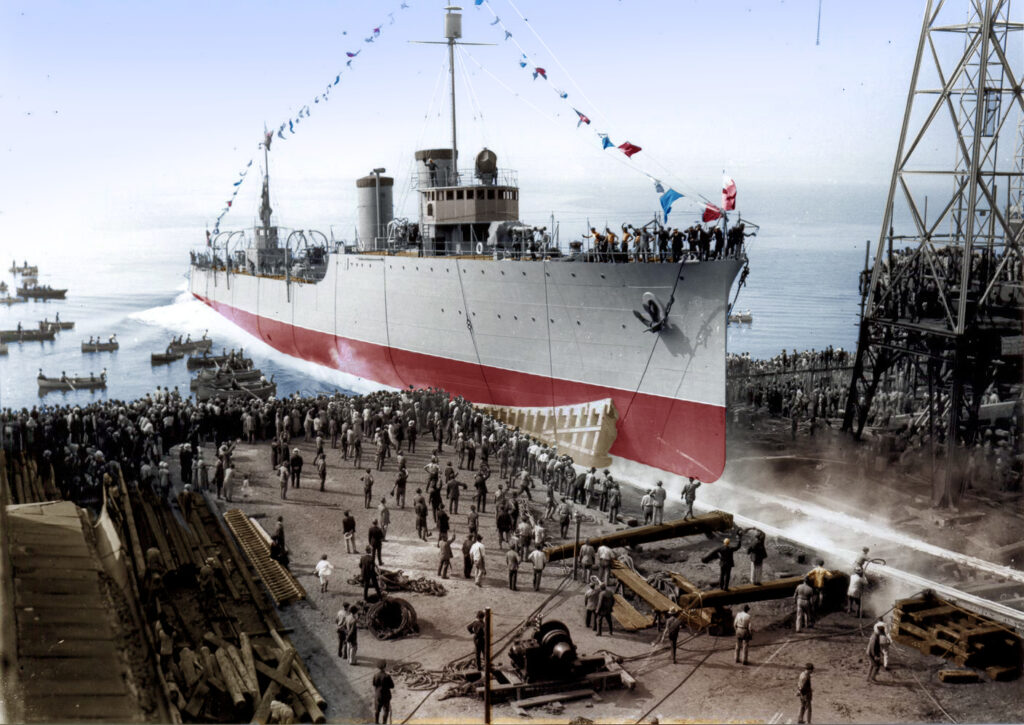
A Leone class destroyer being launched in 1921
The Navigatori class was the last class of “explorers”, designed and built for the Regia Marina, at a time in history when naval warfare were already changing fast and aviation had caught up in the reconnaissance department. To understand the reasons that pushed the Regia Marina to order these ships in a type already obsolete in itself, it is good to go back in time. From the unification of Italy onwards, imperialist expansion creep in the mindset of the Italian political class. Hegemony in the Mediterranean chessboard, make the Mediterranean a new “mare nostrum” urged for maritime and naval control. A concept fully embraced by France, which became even before 1914 the main potential naval adversary for Italy. Friction between the two nations were interrupted in the First World War, interrupted by the need to make a common front against the hegemony of the Central Empires.
But tensions resumed immediately afterwards. Following the Treaty of Washington, Italy obtained parity of tonnage with France, giving impetus to a naval rearmament strategy aiming solely at compating with the French fleet. Until around 1936, Italian strategists still considered the hypothesis of a war against France to be the most realistc, fought mainly on land but with naval clashes given the interest of both nation across the Mediterranean. These clashed excluded aviations, as both countries were not partiularly strong in this segment.

The French Guepard
In this classic view of naval warfare, battleships, heavy cruisers, beign developed, Italy also reconsidered the use of scouts, as in 1920 air power seems not sufficiently reliable, too limited by distances and conditions. It should be recalled thai the Regia Marina built its last scouts in 1921-24, as the Leone class, itself derived from the WWI Mirabello class and considered among the finest example. In fact they were classified as scout cruisers and boasted beefy 6-in guns.
Competition with similar French ships, the large destroyers of the Chacal and Guépard classes started a plan to build two types of ships, on one hand, light cruisers of the Alberto di Giussano class and on the other, new scouts. The first do their mission for the fleet, spot and escape these French “contre-torpilleurs”, and the second to destroy these. For this both needed a very high speed, consistent anti-ship armament and good autonomy. Apart from speed, however, as far as the Navigatori was concerned, none of the other objectives were achieved to really equal the Guepard-Jaguar and their successors, Aigle and Vauquelin, more so the Fantasque and Mogador classes remaining larger and better armed.
The cost of these new ships, in addition was not indifferent given the scarce resources the Italian State could dedicate at ther time. Each ship, excluding armament and accessories, came to cost about 21 million lire of the time, equal to about 11 million Euros today.
At the time of their entry into service, these scouts were already obsolete as navies of other nations ramped other capabilities, notably ASW and AA, and boosted torpedo armament. However, the Navigatori, although much criticised still make good destroyers but their extra armament, good speed and seakeeping, proved to well suited for the escort of convoys and protection of maritime lanes of the Italian Empire.
Development
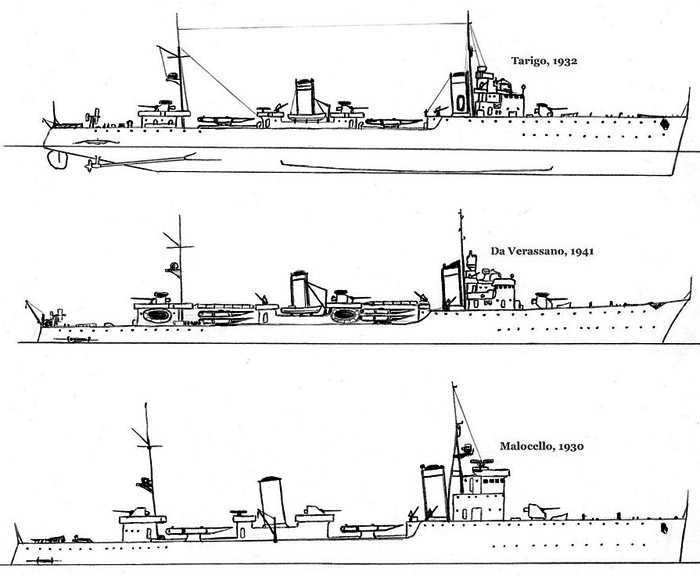
The Navigatori class “esploratori” was carried out by the Ship Projects Committee (Comitato Progetti Navi), directed by the General of the Naval Engineers Giuseppe Rota. The new ships were was characterized by a higher freeboard as usual, with a higher bridge as befitting to their scouting role, and two highy spaced funnels. The main armament consisted of three twin, shielded Ansaldo 120mm/50 Mod. 1926 guns, all in the axis. So basicaly one more than on a Turbine class, placed roughly amidships. The torpedo tube banks were positioned, one between the funnels, the other aft of the second funnel so also far apart. The program ambitonned to have twelve ships, and for this, they were all built in five different shipyards, Ansaldo and Odero of Genoa Sestri, Riva Trigoso, Ancona and Quarnaro-Fiume, and if the resulting ships respecting a general scheme, they presented small differences in appearance, equipment, propulsion and performances.
The original project, soon abandoned, included the installation on board of a Macchi M.5 seaplane housed in a hangar on under deck bow deckhouse, like on a Trento class cruiser. After installing its wings, it was launched from a 16-meter catapult on the centerline, forward of the bow gun. This urged a longer prow, but caused some stability and agility issues, so it was eventually ditched out when the design was completed as a more classic destroyer. The idea of having a reconnaissance seaplabe on a destroyer was not solely considered by Italy. The Netherlands, among all nations, made it effective on their Admiralen class destroyers alreay in 1927. This made some sense in the far east.
Final Characteristics
Hull and general design
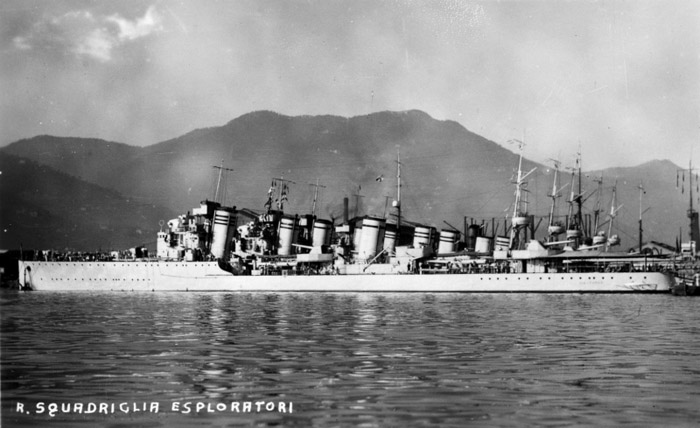
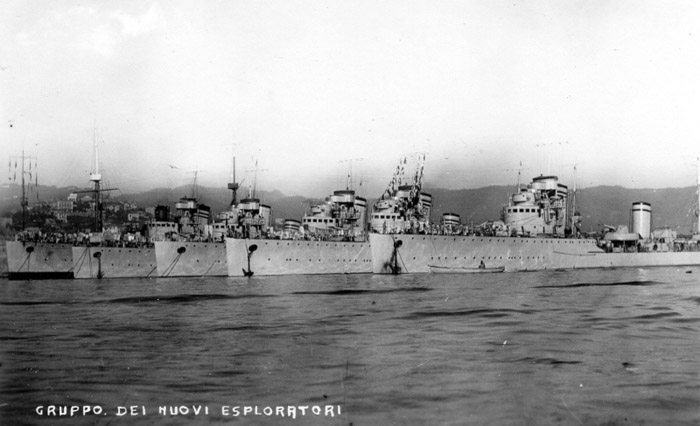
Navigatori-class units at mooring in the early 1930s. Tarigo with other Navigatori-class units in the early 1930s.
The Navigatori class looked superficially as stretched out Turbine class with an amidship insert and extra gun, but there wa smore to it. They had a flat-keeled hull, and the original lines were not particularly sleek, but built in high-strength galvanized steel, featuring 186 transverse frames, reinforced longitudinally by a central keelson plus two longitudinal ones. Internally, it was further divided below and above the waterline into 21 compartments by transverse watertight bulkheads.
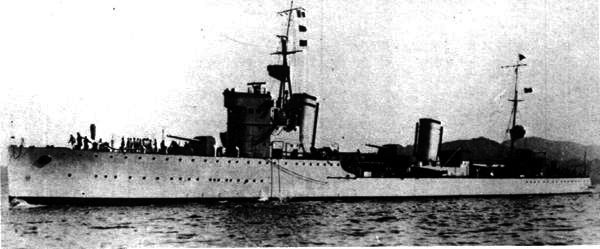
Da Noli as completed, the tall bridge is quite evident there.
The forecastle was high and quite long (42.6 m or 140 ft), extended astern of the first funnel, surmounted by the tall 3-storey bridge tower containing from bottom to top, accommodation and service rooms, fire control room and command bridge plus adjoining chart room aft, and on its roof (“counter-bridge” or “controplancia” in Italian) were placed rangefinders for directing the main battery fire.

The profile of the Navigatori-class ships, originally (above) and after the two cycles of modifications.
Immediately behind was located the large tripod mast supporting one of the two searchlights, of the type O.G.N. 90 cm and 150 A, provided by Officine Galileo, as well as the lookout’s crow’s nest. This tall structures, needed for a scouting role, top weight, combined with the rather advanced coefficients of the hull hydrodynamic shapes, was largely responsible for serious stability issues after completion, as shown on trials. So shortly after their entry into service, they were radically downsized, by lowering the bridge of two floors, eliminating the mast, forward searchlight altogether.
These measures improved stability as requested, and to this was added later, as WW2 flared up, a clipper bow to better cope with heavy weather, replacing their original straight prow. This was done right at the ster of the war on ten ships (excluding Da Recco and Usodimare) and tht came with also widening of the hull. This, with the new “oceanic” type bow which optimised further stability, at the expense of speed, dropped to around 28 knots, a far cry of the original objective of 40 knots.
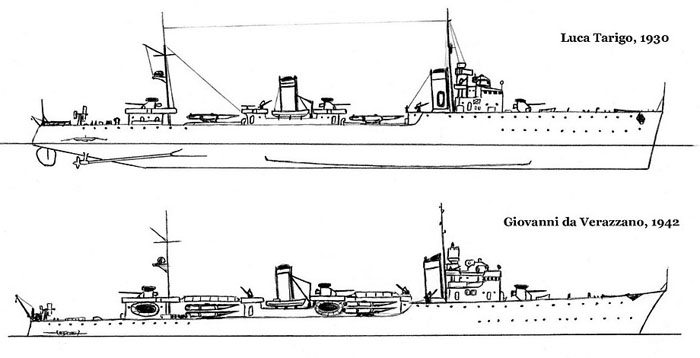
Two other deckhouses were more developed due to the lenght of the ships, placed amidships forward of the second funnel and aft. One was a base for the amidship twin gun mount, as was the aft one. These superstructures were connected to each other and to the forecastle by two gangways, containing service rooms. Da Recco was originally intended as flagship of the entire Navigatori class, and ended with a larger aft deckhouse containing the admiral and staff accommodations and related services.
Service and rescue boats were arranged on deck, starting abaft the second funnel, a 7 m motorboat, and a whaleboat to starboard, and a motor launch and an 8.5 m rowing launch to port. Forward of the wavebreaker on the forecastle was a 3.5 m raft. During the war, this was supplemented by seven “Carlin” type rafts of various sizes, capable of holding from 13 to 39 crew, fixed to the sides of the funnels and gun shields, but therefore also very exposed to shrapnel. In the best of cases, these rafts could hold a total of up to 178, much less than the actual crew and any extra passengers, which had to rely on life jackets and hang over from the Carlin’s side ropes.
Powerplant
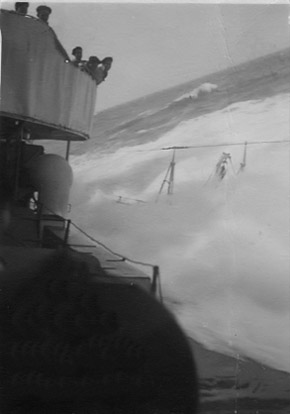 The propulsion system was unique for Italian destroyers of the time, as it was made up of two independent systems which acted as backup in the event of failure or damage (flloding) in any of them. Each group comprised two oil-fired boilers. They divered by yard, Yarrow type for Cantieri del Quarnaro ships, and Odero for the others. They were powered a pair of high and low pressure turbines, Parsons for the Ligurian shipyards, Tosi for C.R.A. Ancona ships, Belluzzo for the Cantieri del Quarnaro ships. Buut the latter revealed serious defects issues in trials and were soon replaced.
The propulsion system was unique for Italian destroyers of the time, as it was made up of two independent systems which acted as backup in the event of failure or damage (flloding) in any of them. Each group comprised two oil-fired boilers. They divered by yard, Yarrow type for Cantieri del Quarnaro ships, and Odero for the others. They were powered a pair of high and low pressure turbines, Parsons for the Ligurian shipyards, Tosi for C.R.A. Ancona ships, Belluzzo for the Cantieri del Quarnaro ships. Buut the latter revealed serious defects issues in trials and were soon replaced.
The The bow boiler group were placed positioned under the first funnel, feeding the port turbine set (HP-LP), and the second group under the aft funnel, powering the starboard turbine set. Each set turbine in turn drove the propeller shafts of its respective side, via an Ansaldo gear reducer. There were two bronze propellers of the three-bladed Scaglia type, with a varying diameter between 3.4 and 3.6 m, surface area of 7.3 m2 and a pitch of 4 m between ships. Total output was 55,000 HP.
This powerplant was cutting-edge for the Italian standards of the time. To put things into perspective, this was 40,000 shp (30,000 kW) on the Turbine class, for 33 knots. Combined with the characteristics of a well-refined, slender hull allowed these ships to reach in sea trials, unprecedented figures, as required by the initial scout role: Just over 39 knots for Zeno, and up to almost 42 knots (41.57 knots at 65,915 HP and 416 propeller revolutions/minute) on Pigafetta. It should be noted that these speeds were obtained in really unserviceable conditions, meaning with incomplete fitting out, litthe oil, no ammunition nor supplies, barebones. They could never be reached in operational conditions, and were down to 36 knots as a baseline, 28 knots in WW2 after scores of modifications to adress their glaring stability issues.

The machinery spaced used the long hull for alternated spaces, four boilers in two widely spaced boiler rooms and the alternated two turbine rooms. The forward unit driving the port shaft and the aft unit the starboard shaft. Of course the new regime was quick to boast such speeds, of up to 43.5 knots (80.6 km/h; 50.1 mph) as a propaganda tool directed notably at France, being far superior to the Guepard/Jaguar for example (35 knots), and mirroring the equally impressive performances of the Guissano class cruisers. These speeds were maintained only on straight lines, but when heeling over in hard turbes, they started to bleed speed and roll dangerously close to unrecoverable point, leading to the latter modifications.
Armament of the Navigatori class

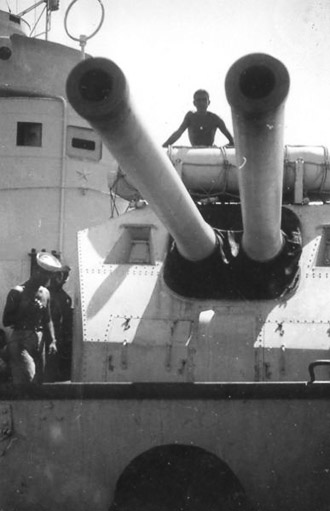 The main armament was identical on all units, never modified or replicated in any other class, with six Ansaldo Modello 1926 120/50 guns. They were placed in three twin shielded mounts, in the axis, first on the forecastle with a 135° port and starboard arc, the second above the deckhouse amidships, with a 65° forward, 45° aft arcs, and the third on the aft deckhouse with a 155° arc port and starboard.
The main armament was identical on all units, never modified or replicated in any other class, with six Ansaldo Modello 1926 120/50 guns. They were placed in three twin shielded mounts, in the axis, first on the forecastle with a 135° port and starboard arc, the second above the deckhouse amidships, with a 65° forward, 45° aft arcs, and the third on the aft deckhouse with a 155° arc port and starboard.
Their hitting power was good enough for their thinly built adversaries, and the range was good, but being the usual paired guns, not independent, they were close enough to cause interference, and this resulted in high inaccuracy. Although not specifically designed for this with an elevation reduced to 45° and total absence of anti-aircraft aiming, they were still considered as dual purpose and usabled for anti-aircraft fire, provided with “shrapnel shells”. The latter created a wide cone (50 m or 160 ft) or deadly projectiles obliteraing any aicraft in the vicinity. The idea was developed in the interwar and also used extensvely by Japan.
Cannone da 120mm/50 OTO Modello 1926
Mount: 5.1 tons (5,552 kg), 252.0 in (6.400 m)
Shell: Separate, 23 kg AP, HE 51.8 lbs. (23.15 kg).
Propellant: 21.4 lbs. (9.7 kg)
Muzzle Velocity: 3,117 fps (950 mps) Later reduced to 3,018 fps (920 mps)
Range: 19,600 m
Rate of fire: 6-7 rounds per minute
The Navigatori were provided 182 rounds per gun so 1092 total. Standard outfit was 408 AP, 672 HE, 120 incendiary and 100 star shells, plus an unspecified number of ready rounds.
Fire Control
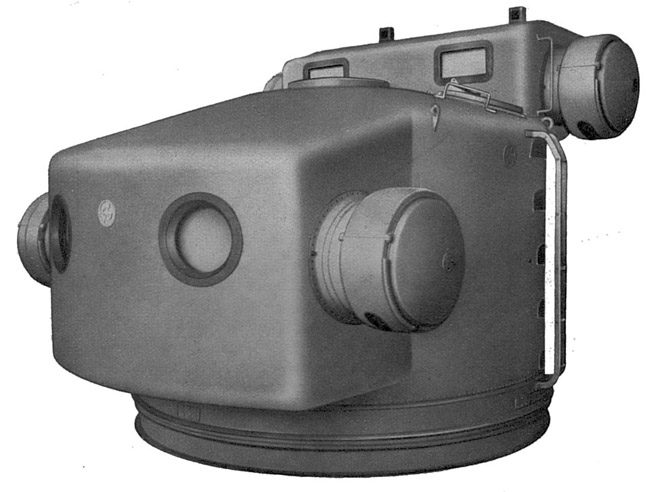
Fire direction was optimized for daytime actions, with two three meters (10 in) Officine Galileo/Zeiss stereoscopic rangefinders. One set was on top of the bridge, in a better position than usual destroyers, and another on the “counter-bridge” for A and B mounts, which also contained the San Giorgio general aiming system. There was a third Zeiss/San Giorgio rangefinder positioned on the deckhouse amidships for “C” gun, later replaced in WW2 by 20 mm AA gun mounts. Night-time firing systems were only installed on some units well into WW2. After 1937, the initial aiming systems received the complement of a San Giorgio kinematic teleinclinometer placed under the crow’s nest.
2-in (40mm/39) Vickers-Terni M1917
The anti-aircraft armament initially comprised the same two Vickers-Terni 1915 40/39 machine guns placed on either side on the forecastle, next to the forefunnel, as well as four Breda 13.2 mm machine guns in two twin mounts on the bridge’s wings.
Specs Vickers-Terni 1915:
Weight 550 lbs. (249 kg) including cooling water
Overall lenght 96 in (2.438 m), bore 62 in (1.575 m), 200 rpm cyclical, 50-75 rpm practical
Fired the HE or CP rounds of 2.95 lbs. (1.34 kg) at 2,000 fps (610 mps).
Maximum Effective Range: 1,200 yards (1,100 m)
Specs 13.2 mm Breda HMG:

Specs (Modello 1931)
Gun Weight: 104.5 lbs. (47.5 kg), Bore Length 39.4 in (1.000 m). 500 rounds per minute cyclic.
Fired 5.4 in (13.7 cm) 0.28 lbs. (0.125 kg) rounds at 2,592 fps (790 mps), effective range: 2,200 yards (2,000 m).
533 mm Torpedoes

The ships like previous destroyers, were given the same two triple in-line torpedo launchers, 533 mm, San Giorgio type. They were placed in the axis, one between the two funnels and the second behind the aft funnel. The aiming was electrically controlled by the Fire Direction system and its two stations:
-One for daytime launching, located in the crow’s nest
-One for night launching, on the bridge.
They were likely given the 53.3 cm (21″) Si 270/533.4 x 7.2 “M” model. This was a model manufactured in Naples (Silurificio Italiano).
There were no reloads.
Specs:
Weight; 3,748 lbs. (1,700 kg)
Overall Length: 23 ft. 7 in. (7.200 m)
Warhead: 595 lbs. (270 kg)
Range/Speed settings: 4,400 yards (4,000 m)/46 kts, 8,750 yards (8,000 m)/35 kts, 13,100 yards (12,000 m)/29 kts
Powered by Wet-heater. Later versions went to 48/38/30 knots on the same ranges settings.
Ginocchio ASW Torpedo
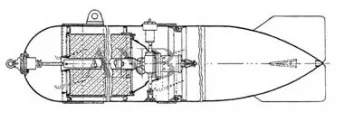 Underwater Weapons Directorate of La Spezia, table dated September 1931, longitudinal section src
Underwater Weapons Directorate of La Spezia, table dated September 1931, longitudinal section src
In the original design, the ships carried a Ginocchio “towing torpedo” GP1927/46 T. It was eliminated in 1940. Developed in the 1930s, it was a promising new device. These weapons were used during the First World War by light units such as MAS. It could be towed at variable speeds from 2 to 20 knots, could dive to depths ranging from 17 to 33 m. Depending on the length of the towing cable, maintaining a predetermined immersion, they were ready to explode due to the impact effect or thanks to an electrical ignition circuit.
Modified and improved after the WW2, the modello 46/1927 type GP (great depth) had a 46 kg charge, automatic trigger, and became widespread on torpedo boats and VAS ships. See also.
ASW Grenades
Two rackes were there from the start, but two launchers were installed at the stern in 1939-40 for the launch of 50 and 100 kg depth charges. After 1941, since all were used as convoy escorts, the stocks were strengthened with more modern charges, some of which were German WB D of 125 kg and WB F of 60 kg as well as 30 kg “intimidatory” bombs, which were a warning charge to force a submarine to surface.
The launchers were trainable mortars used to project 100 kg (220 lbs.) DCs, normally fired at a 45 degree angle.
The standard depth charges while in servicee were likely the following:
B TG Monc. 50/1927 4 Reg. (1927): 110 lbs. (50 kg) for 20, 40, 70 and 100 m (65, 130, 230 and 330 feet).
B TG Monc. 100/1927 4 Reg. (1927): 220 lbs. (100 kg) for 25, 50, 75 and 100 m (80, 165, 250 and 330 feet).
B TG Monc. 50/1936 (1936): 141 lbs. (64 kg) or 110 lbs. (50 kg), unknown settings.
Mines
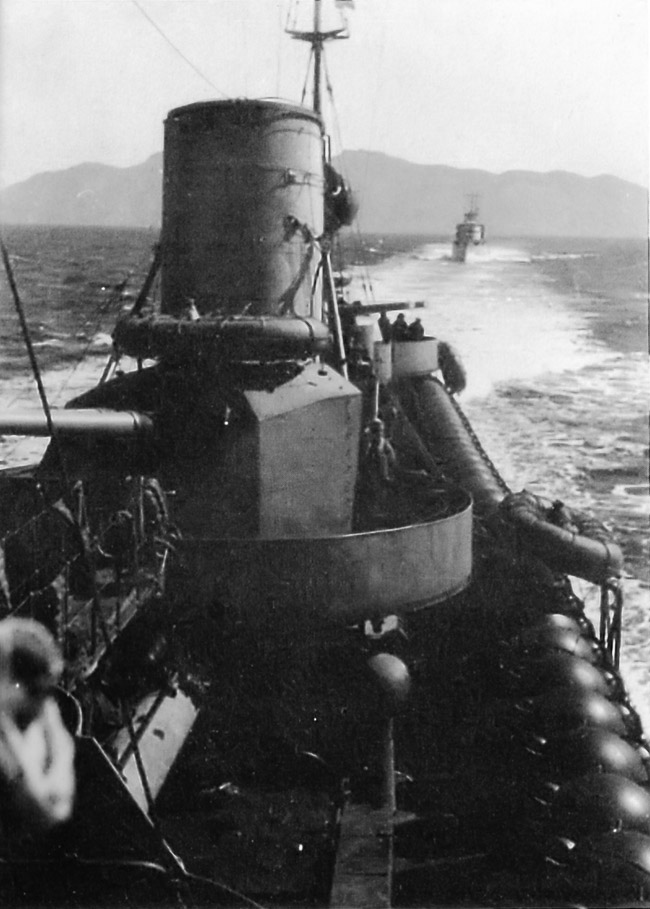
For minelaying all units except Da Recco were equipped with rails, and could carry up to 54 Vickers-Elia mines (760 kg) or 56 Bollo mines (590 kg). During the war, seven ships had their rails lengthened to lay 86 mines of the P.200 type or 104 Bollo type, and German antenna mines.
-Vickers Elia (VE) 1,676 lbs. (760 kg), 320 lbs. (145 kg) WH
-Bollo Mines
Paravanes
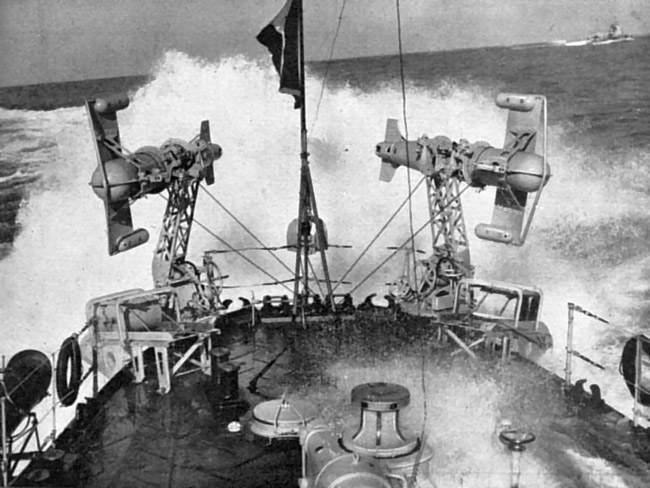
For protection in 1940, type C paravaned were mounted at the stern of all ships. They were lowered down via their lattice support gear arms, but once in water, they created a strong reduction in agility by the drag they created, reducing their practical use. They also were detrimental especially given the caracteristics of the Navigatori class, and definitively removed in 1942.
Smoke Projectors
To complement protection, all Navigatori class destroyers were equipped with admiralty type type smoke generators, placed at the base of the funnels, in complement to the diesels located aft on the starboard side. Later in WW2 they were replaced by more efficient chlorohydrin systems.

Old profile
⚙ specifications as built |
|
| Displacement | 1,090 t (1,070 long tons) (standard), 1,700 t (1,670 long tons) full load. |
| Dimensions | 107,28 x 10,2 x 3,4 m (352 ft x 33 ft 6 in x 11 ft 2 in) |
| Propulsion | 2 shafts GST, 4 boilers 55,000 shp (41,000 kW) |
| Speed | 38 kts (70,38 km/h) |
| Range | 3,800 nmi (7,000 km; 4,400 mi) at 18 knots (33 km/h; 21 mph) |
| Armament | 3×2 120 mm, 2× 40 mm, 4×2 13.2 mm, 2×3 533 mm, 52 mines |
| Crew | 179-187 |
Modifications

Navigatori class general appearance in 1940 and 1943
Armament
Pre-war modifications included stability improvements of all sorts. Instead of deleting the torpedo launchers entirerly, they were modified, receiving lighter twin tubes systems. Btut latter in the war as anti-ship actions regained a premium, they bevame “triple” (except on Da Recco and Pigafetta) by having an extra 18-inches tube. Surviving ships after mid-1942 had their aft bank removed altogether to be replaced by a platform for two Breda 37mm/54 anti-aircraft cannons. The AA armament, quite weak by 1940 standards, was strengthened by replacing the 1915 Vickers-Terni by Breda 20mm/65 or Oerlikon 20mm/70 guns, differing among ships.
Prewar Modifications:

In 1933-1934 all ships had their oil stowage decreased to 533t, and triple TT systems with the central 450 mm and two 533mm TT removed, and the addition of two twin 13.2mm/76, while the banks were twin-tubes only.
Wartime Modifications:
In 1939 – 1940, all except Nicolosso da Recco and Antonio Usodimare went into drydock to receive a beam extension to 11.2 m, the stem rebuilt as a clipper (atlantic) prow, with dimensions now reaching 109.3 meters long overall for 11.2 meters in beam and 4.20m in height. Displacement rose to 2,125 standard and 2,888t FL, top speed fell to 34kts, with 680t of oil fuel. They had both torpedo tube banks replaced by triple ones again (pyramid, extra 18-in tube), and the addition of two twin 13.2mm/76 Breda and two depht charge throwers.
In 1939-1940, Nicolosso da Recco was fitted woit rails for 56 mines and had twi DCT added like the others, and Antonio Usodimare only had extra DCT.
By mid-1940 to late 1941, the rest of the class underwent further modifications:
Alvise da Mosto, Giovanni di Verazzano, Lanzerotto Malocello, Emanuele Pessagno, Luca Tarigo, Antonio Usodimare, Ugolini Vivaldi, Nicoló Zeno saw the removal of their obsolete 40mm/39 Vickers Terni AA guns for four twin 13.2mm/76 Breda AA guns and seven single 20mm/65 Breda 1940 AA guns.
Antonio da Noli instead had seven 20mm/70 Scotti-Isotta Fraschini modello 1939 while Nicolosso da Recco and Antonio Pigafetta had two 20mm/70 Scotti-Isotta Fraschini 1939, seven 20mm/65 Breda 1940 on top of what was decribed above. Leone Pancaldo had nine 20mm/65 Breda 1940.
In 1942 all survivors received a German S-Gerät sonar. Antonio da Noli, Nicolosso da Recco, Lanzerotto Malocello, Leone Pancaldo, Antonio Pigafetta, Ugolini Vivaldi, Nicoló Zeno lost their aft TT banks for two single 37mm/54 Breda 1939 in order to boost AA defence and in 1942-1943, surviving Leone Pancaldo, Vivaldi and Nicolosso da Recco receicved the Italian EC.3/ter Gufo radar whereas by 1943 Lanzerotto Malocello received in addition a German FuMO 39 radar.
Sensors
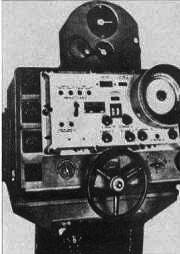 During the war, the Navigatori class came with an echo sounder in addition to classci hydrophones, installed on Da Noli, Da Recco, Da Verazzano, Malocello, Pancaldo, Vivaldi and Zeno. A radar was mounted on three ships, the German Fu.Mo.24 on Malocello and Italian-made EC3/ter “Gufo” on Pancaldo, Da Noli but also Vivaldi. The EC3/ter “Gufo” worked at a Frequency between 400 and 750 MHz, with a PRF of 500 Hz, a Beamwidth, 6° (horizontal), 12° (vertical) and a Pulsewidth of 4 μs, 3 rpm rate, and a range between 25 and 80 km (16–50 mi) depending on conditions. Peak Power was 10 kW.
During the war, the Navigatori class came with an echo sounder in addition to classci hydrophones, installed on Da Noli, Da Recco, Da Verazzano, Malocello, Pancaldo, Vivaldi and Zeno. A radar was mounted on three ships, the German Fu.Mo.24 on Malocello and Italian-made EC3/ter “Gufo” on Pancaldo, Da Noli but also Vivaldi. The EC3/ter “Gufo” worked at a Frequency between 400 and 750 MHz, with a PRF of 500 Hz, a Beamwidth, 6° (horizontal), 12° (vertical) and a Pulsewidth of 4 μs, 3 rpm rate, and a range between 25 and 80 km (16–50 mi) depending on conditions. Peak Power was 10 kW.
⚙ specifications in 1942 |
|
| Displacement | 2,125 standard, 2,888t Fully loaded |
| Dimensions | 109.3 x 11.2 x 4.20m (358 x 37 x 14 ft) |
| Speed | 34 knots (65 km/h; 40 mph) down to 28 knots 1943 |
| Range | 680t of fuel oil, 3,000 nmi at 14 knots |
| Armament | 3×2 120mm/50, 2×2 37 mm, 4×2 13.2 mm, 7x 20mm/65, 1×3 533 mm 2DCT, 2DCR |
| Crew | 222-225 |
Appearance

From Pinterest.
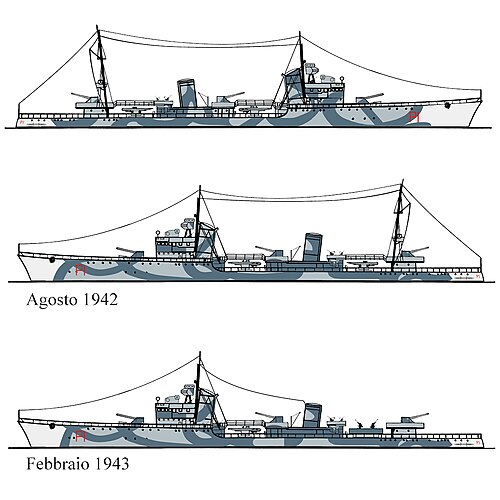
Camouflage of Pigafetta, 1942

“Claudus” 1941-42 experimental scheme on Zeno.
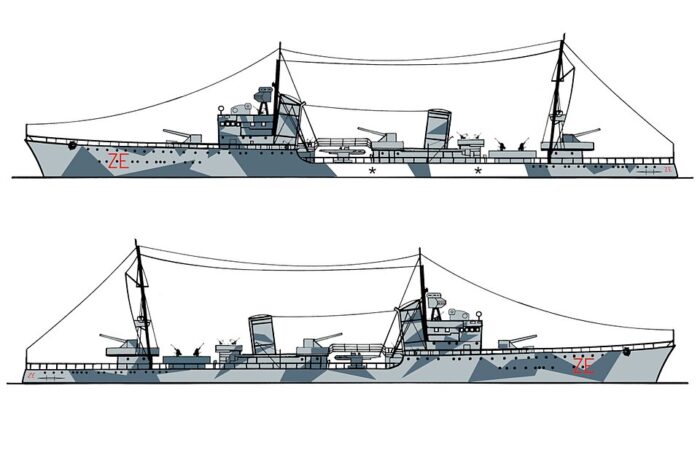
More classic scheme in late 1942-1943 on Zeno.

The Scout Usordimare as completed in 1929, note the tall bridge.

Verrazano in 1939, before the second round of modifications

Nicolo Zeno “claudus” camouflage.
Upon entering service, all ships were painted with the standard light grey scheme, until November 1941. From there, they received camouflage patterns designed by the painter Rudolf Claudus.The first was Zeno, which maintained this dark grey over light grey scheme for about a year, and later confirmed the definitive official three-tone scheme of dark grey, light grey and off-white applied to almost all the and other units. Da Mosto never received a camouflage as she was sunk before. Pessagno and Tarigo maintained their light grey livery until sinking as well. In June to November 1941 to improve identification, the bow deck was painted with white and red diagonal stripes like all other RN ships. The ensemble is a pleasing option for modellers among the jungle of WW2 light vessels.
Evaluation
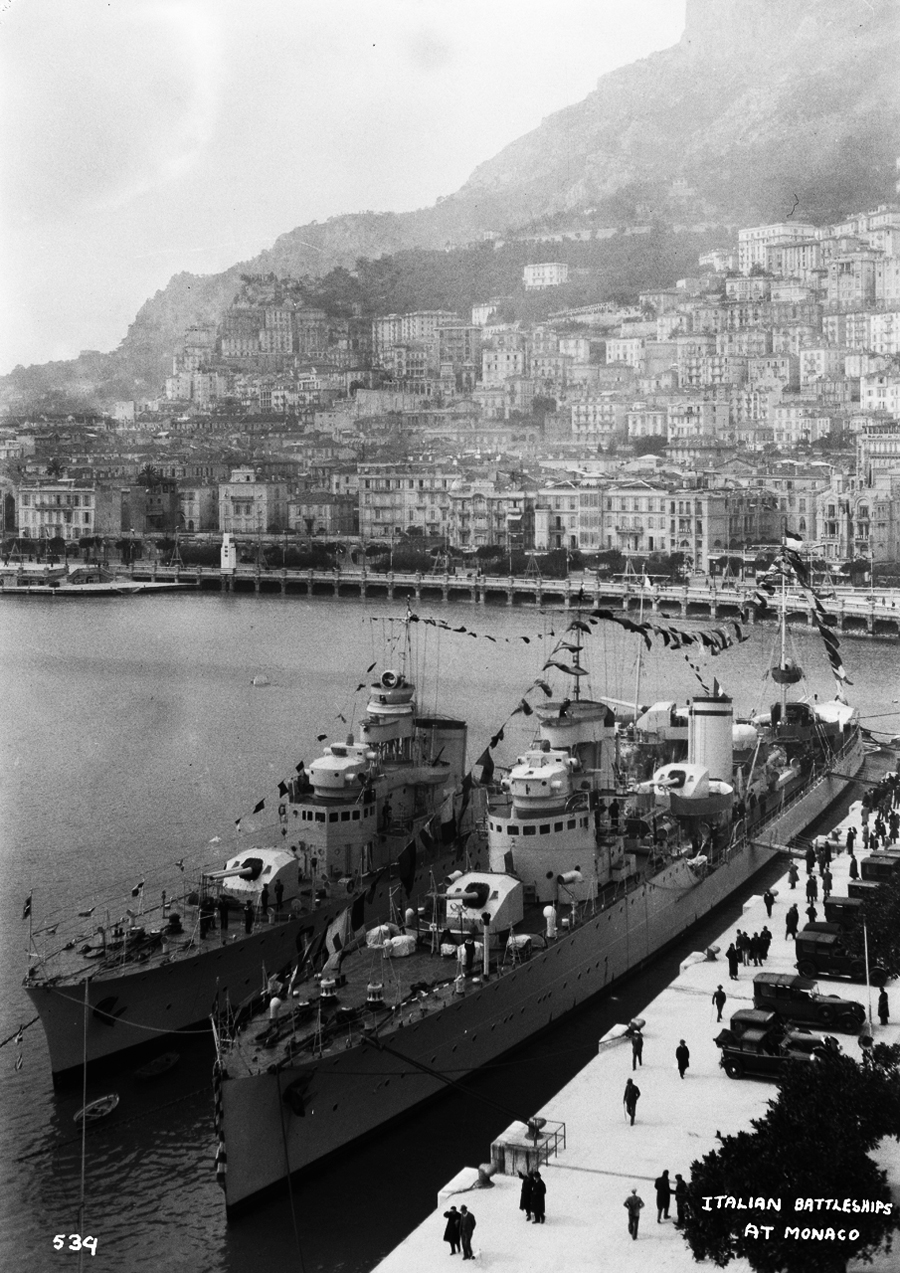
In the interbellum, the “Navigatori” were taunted as the best Italian destroyers, and regularly showcases with international cruisers. The most famous was an Atlantic cruise in support of Italo Balbo’s first transoceanic flight by late 1930 and early 1931 in which the eight ships in service took part: Da Recco (Flagship), Da Noli, Malocello, Pancaldo, Pessagno, Tarigo, Usodimare and Vivaldi, in three groups deployed in strategic positions along Balbo’s expected trip. They stated at sea almost four months, participated in the overall success of the transoceanic flight ending in Rio de Janeiro. There, they met Balbo’s twelve Savoia S.55 seaplanes and landed their support in order to return to Italy, followed by two separate greeting ceremonies in Venice and Genoa by the fall of 1931 with all twelve ships now in service and receving their respective battle flags. Training went on while cruises went on, notably in Aegean ports. Between 1936 and 1938 they carried out support missions as part of Italian covert participation in the Spanish Civil War. In 1938, by Royal Decree no. 1483 of 5 September, they were downgraded from scouts to destroyers.
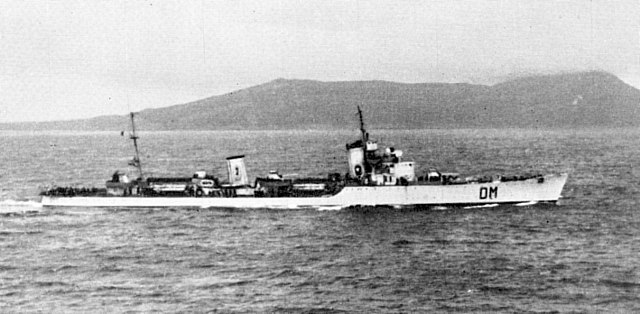
Alvise Da Mosto in 1940
As already mentioned by the fall of 1938 and mid-1940, ten ships underxent a second cycle of major modifications to improve stability, not provided to Da Recco and the Usodimare as the war started already. All ships were soon assigned to their respective Divisions:
Order of Battle June 1940At the beginning of hostilities, the IXth Battleship Division (Admiral Bergamini), comprising the very modern units of the Littorio class, was finishing its training period and was not yet operational. Therefore, the XIV Squadron was provisionally assigned to the IV Cruiser Division (Admiral Marenco) and the XV Squadron to the VIII Cruiser Division (Admiral Legnani). |
||
| DesRon XIV | IX Bat.Div. | Vivaldi*, Da Noli, Malocello, Pancaldo |
| DesRon XV | IX Bat.Div.** | Pigafetta*, Da Mosto, Da Verazzano, Zeno |
| Desron XVI | CruDiv VIII | Da Recco*, Pessagno, Tarigo, Usodimare |
*flagship
**provisionally attached to CruDiv VIII
Hull Codes:
Alvise Da Mosto: DM
Antonio Da Noli: DN
Antonio Pigafetta: PI
Antoniotto Usodimare: US
Emanuele Pessagno: PS
Giovanni Da Verazzano: DV
Lanzerotto Malocello: MO
Leone Pancaldo: PN
Luca Tarigo: TA
Nicoló Zeno: ZE
Nicoloso Da Recco: DR
Ugolino Vivaldi: VI
 Their role will changed quickly over time, thanks to the logistical needs of the Regia Marina, and took heavy losses by performing their duties (all but one). Only Da Recco indeed survived the war, being decommissioned in 1954. The other 11 suffered as many as 12 sinkings. The one that did it twice was Pancaldo, sunk in shallow water, recovered, and sunk again a few years later. Four were lost in classic surface action, one lost on mines, one by air attack, two by the Germans. Usodimare was mistook for British DD and sunk on 8 June 1942 by the Italian submarine Alagi. The last two, Pigafetta and Zeno, were sabotaged by their crew at the armistice, not to fall into German hands. Pigafetta was however refloated and repaired, then sunk again in 1944.
Their role will changed quickly over time, thanks to the logistical needs of the Regia Marina, and took heavy losses by performing their duties (all but one). Only Da Recco indeed survived the war, being decommissioned in 1954. The other 11 suffered as many as 12 sinkings. The one that did it twice was Pancaldo, sunk in shallow water, recovered, and sunk again a few years later. Four were lost in classic surface action, one lost on mines, one by air attack, two by the Germans. Usodimare was mistook for British DD and sunk on 8 June 1942 by the Italian submarine Alagi. The last two, Pigafetta and Zeno, were sabotaged by their crew at the armistice, not to fall into German hands. Pigafetta was however refloated and repaired, then sunk again in 1944.

Malocello after the first round of modifications, on sea trials at full speed
The “Navigatori” class were very active during the war, with 1,651 missions performed for 571,306 nautical miles (1,057,492 km or 657,000 miles) traveled in 35,509 hours at sea, consuming 219,596 tons of diesel fuel. They were also among the most multi-role destroyers of the RM, actively participating in the fleet activities taking up 3.6% of the entire Regia Marina’s ships activities from 1940 to 1943, and carried out 150 minelaying missions (9.1% total) as well as troop and material transport (87 missions, 5.3% total) and escort convoys to North Africa (521 missions, 31.6%). They took part in 33 anti-submarine hunting missions and 13 coastal bombardment missions, all for 3,716 days spent in maintenance or repairs. Even if they had been still around in 1945, they would have been utterly worn out beyond recoignition and scrapped.

Leone Pancaldo, adapting the famous James Bond title “you only live twice”.
The Navigatori-class destroyers almost always played a secondary role due to their low practical speeds, 28 knots maximum, so they were unable to escort fleet units efficiently as they were capable of 30 to 37 knots combat runs in operations. This did not prevent some to stand their ground quite well on good old surface combat: The Vivaldi and Malocello were up against clearly superior odds, such as at the Battle of Pantelleria. They were ordered to break away from the formation and attack the British convoy with torpedoes, facing four destroyers of the RN XII flotilla emerging from a smoke screen, then five destroyers of the XI flotilla, and yet kept them busy for half an hour of artillery and torpedo exchanges. Vivaldi was hit and immobilized and was saved by Malocello, Premuda and other ships after the destroyers were ordered to return to protect their convoy. She reached Pantelleria and was repaired to fight another day. Pigafetta in the same action towed the crippled cruiser Trento in an area infested by British submarines.
Minelaying activities were a great contribution from ths class, the better equipped to lay large minefields. Such missions were performed for the entire duration of the war (all but Pancaldo and Da Recco). In the last months of the war for Italy, they were used to carry troops and supplies on the “death route” to Tunisia and brought back troops to Italy in a continuous noria. The scarcity of slow merchant ships meant that destroyers were preferably used for these transport missiones at a cost of Malocello and Pancaldo with 264 men. However they performed well in convoy escorts, and were considered among the best escort units that the Regia Marine can field. This cost them five ships and a badely damaged Da Recco, plus the loss of over 350 men.
Pancaldo, first to be hit in such missions was claimed by Swordfish torpedo bombers from HMS Eagle, on her return from the battle of Punta Stilo, on 9 July 1940. But since she sank in shallow water, thanks to her captain’s efforts, she could be later retrieved, repaired and returned to service after 6 months.

An entire Navigatori Squadron Entering Taranto
Among the most tragic losses and famous naval action was Tarigo, escort leader of the convoy of the same name in the night of 16 April 1941. The convoy was spotted by radar of a squadron of British destroyers, which attacked an important Italo-German convoy. Tarigo but up a brave gunnery fight but was doomed, ad still before she sank, she managed to launch all her torpedoes, claiming the large Tribal class destroyer Mohawk. It should be said that two of the four DDs of the 14th Flotilla were powerful Tribals (the other was HMS Nubian), armed with eight main guns. The two others, Hervis and Janus, were equally powerful J class. The last two sank were Da Noli and Vivaldi, immediately following the armistice, at the Strait of Bonifacio after clashing with German forces. Da Recco and Pigafetta survived, were scuttled, the first so good she was never refloated, the second becoming TA 44, then sunk in Trieste in an Allied air raid.
Career of the Navigatori class
 Alvise Da Mosto
Alvise Da Mosto

Named after Alvise Cadamosto (Venetian explorer and slave trader, hired by Prince Henry the Navigator) she was laid down at CNQ, Fiume on 22 August 1928, launched on 1 July 1929 and commissioned or completed on 15 March 1931. On sea trials she topped a record 42.7 knots (79.1 km/h), fastest in class. She received all modifications that her sisterships underent already as the was the penultimate in class as well. All in order to improve stability and seaworthiness. She took part in port visits, training cruiser, and naval exercises and visited South America with her sister Emanuele Pessagno. Between 1936 and 1937 she was deployed in the Spanish Civil War, escorting ships carried troops and supplies for Franco’s forces, from Italy to Spain.
After being re-rated as a destroyer in 1938, she was in the 9th Battleship Division and detached with the VIII Cruiser Division on paper on 10 June 1940, undergoing modification of her bow at La Spezia Naval Arsenal, and serviceable from August 1940, assigned to the 15th Destroyer Division with Pigafetta (flagship), Da Verazzano, and Zeno. On 1–2 September 1940 she was part of the response for Operation “Hats”, and later agains operation “MB 5”. From April and August 1941 with the VIIth Cruiser Division, she took part in minelaying missions in the Sicilian Channel and off the coast of Tripolitania while escorted supply convoys to Libya. In November 1941 she received a German S-Gerat sonar.
On 30 November 1941, she escorted the tanker Iridio Mantovani (8,600 tons) from Trapani to Tripoli. On 1 December, the tanker was crippled at sunset by marauding Bristol Blenheim bombers. Da Mosto tried to take her in tow, until the tanker was finished off by another air strike, abandoned. Da Mosto was later attacked by the Force K (HMS Aurora and Penelope, DD HMS Lively) and engaged them to help the evacuation of the sinking tanker. The duel was unequal. One shell hit the magazines, she detonated and quickly sank 75 miles northwest of Tripoli with 138 going down as well. The tanker’s blazing wreck was finished off later. There were 125 survivors were later rescued by the Generale Marcello Prestinari. Commanding officer Dell’Anno, was awarded the Gold Medal of Military Valor for his fight.
 Antonio da Noli
Antonio da Noli

Named after Antonio da Noli a Genoese Navigator of the XVth Cent. working for the King oif Portugal and his governor, she was laid down at CT, Riva Trigoso on 25 june 1927, launched on 21 May 1929 and commissioned on 29 dec. 1929. She started with post trials modification work in 1930 to improve stability inclusing having her ruddder replaced. From December 1930 to early 1931, she was in suppot of Balbo’s Italy-Brazil flight. She took part in escort missions in the Spanish Civil War (1936-1938) and between fall 1939 and early 1940, underwent further modification, being assigned to the XIV Destroyer Squadron with Vivaldi, Pancaldo and Malocello. She was tasked of convoys to North Africa when not detached to lay minefields. She took part in the battle of Punta Stilo on 9 July 1940, as part of the protection and support group of the V Battleship Division, IV and VIII Cruiser Divisions with four other destroyer squadrons. But they were rushed in from their reserve in Taranto by Admiral Inigo Campioni to replaced three destroyers that broke down, leaving Taranto at 6:18 on 9 July. But Da Noli also broke down and was back to port.
On 1 August, she left Augusta with Vivaldi, Pessagno, Usodimare and da Recco for ASW patrols. From 31 August and 2 September she escorted a large convoy of 3 troop transports from Tripoli to Taranto, missed underway by HMS Upholder. On 7-8 October, she laid a minefield off Cape Bon which latter claimed HMS Hyperion.
On 12 October she left Messina escorting the III Division (Trento, Trieste, Bolzano) in assistance on the Battle of Cape Passero. On 7 November she was sent in another intercept, found none.
On 7-8 January 1941, together she laid the minefields «X 2» and «X 3» off Cape Bon. On 22 January she relieved the destroyers Freccia and Saetta in escort on the Naples-Trapani route, to Tripoli on the 24th, ambushed underway by HMS Unique against the Esperia. On 23 February she left Naples to Tripoli with 4 merchant ships. On 5 March, Naples to Libya via Palermo.
On 2-4 April she escorted another from Tripoli to Naples, but lost the transport Galilea to HMS Upright. On 12 April she escorted 5 steamships and Jervis, Janus, Nubian and Mohawk were sent out from Malta in intercept but failed. She took part in rescue operations of the survivors of her sister Tarigo destroyed by the same destroyers on 16 April.
On 4-5 May, 26-28 May, 25-29 June she took part in more missions and on 17 September after leaving Taranto with the convoy «Vulcania» for Tripoli (troopships Neptunia and Oceania), their formation stumbled upon a British blockade forced off the Libyan coast: HMS Upholder, Unbeaten, Upright and Ursula. at 4.15 on the 18th Upholder hit Neptunia and Oceania. Later both sank, as well despite the effort of the towing Pessagno. Off 5,434 rescued men, Da Noli contributed to 682.
On 2 October from Naples to Libya, her formation was attacked by British torpedo bombers of the 830th Squadron. On 20 October she carried troops to Benghazi with Zeno and Pessagno and following day while underway to Augusta, they were missed by a submarine 15 miles north of Benghazi. On 21 November she escorted the cruiser Garibaldi, Duca degli Abruzzi, in an indirect escort mission for two convoys. On 13 December from Taranto in indirect escort group she escorted Littorio and Vittorio Veneto, in operation M 41. Submarines torpedoed Vittorio Veneto and sank the merchantmen Filzi and the Del Greco. Da Noli escorted Veneto back to Taranto.
On 16-18 December, she was part of operation M 42 from Taranto to Tripoli with convoy «L». On the 18th she took another destroyer in tow after was attacked and hit by RAF aircraft off Tagiura. On 3 January 1942 she left Taranto escorting Trento and Gorizia, Littorio, Cesare and Doria in operation M 43 distant cover of three convoys to Libya, a success.
On 22 January she took part in operation T.18 bringing to Africa 15,000 tons of materials, 97 tanks, 271 vehicles and 1,467 men while on the 23rd the transport Victoria was was damaged by torpedo bomber attacks. On 21-22 February with Trento, Gorizia and Bande Nere, she was indirect escort for K 7 convoy (4 transport, a tanker, 10 destroyers, 2 TBs carrying 29,517t of supplies, 113 tanks, 575 vehicles, 405 men. On 11 April in fog, she was rammed by the steamer Honestas and spent several months in dockyard repairs, being modernized.
On 2 December 1942 she rescued men from the convoy destroyed at the battle of the Skerki Bank.
On 10 December she carried troops from Trapani to Bizerta and by February 1943, she laid the minefield S 62. On 28 February after her laying of the mine barrage «S 10», the foamtion was attacked by a sumbmarine and while didging tirpedoes, Da Noli had a failure of rudder, and rammed her sister Zeno amidships. Their bulkheads held and they were able to reach home on their own power.
With the armistice, Da Noli under command of Pio Valdambrini, left La Spezia with Vivaldi to Civitavecchia, to embark King Vittorio Emanuele III from Rome to Pescara, Vivaldi and Da Noli on 9 September 1943 were ordered to La Maddalena, to meet the gathered Italian naval fleet, from La Spezia. They were ordered to proceed and sink on sight every encountered German ship. But in the Strait of Bonifacio, while manoeuvering tight, the two destroyers on 9 September, spoted patrol boats and motor launches, sinking, damaging, made the rest rout. They were pounded by the coastal batteries of Corsica, Da Noli hhit twice and while dodging more, hit a mine amidships. The bridge was blasted, killing commander Valdambrini. Cut in two, Da Noli sank rapidly at 17:20 pr 17:50 5 miles west of the Pertusato lighthouse. She went down with 218-228 (some missing) and 39 survivors, after 208 missions, 70,466 miles.
The wreck was rediscovered in 1975 by coral fisherman Giovanni Spigno of Santa Teresa Gallura, explored on 2009 and a plaque donated in 2016.
 Nicoloso da Recco
Nicoloso da Recco
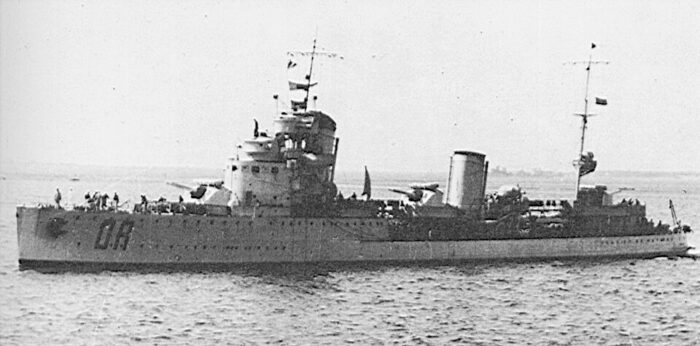
Nicoloso da Recco, named after 14th-century Italian navigator from Genoa, who visited the Canary Islands in 1341 on behalf of Afonso IV of Portugal. She was laid down at CNR, Ancona on 14 December 1927, launched on 5 January 1930 and commissioned on 20 May. After commission she had a short training and went back to shipyard for extensive modifications, to improve stability. She too part in Balbo’s S.55A Italy-Brazil flight (December 1930-January 1931). After 5 months at sea she was back on 27 May 1931. She took part in the 50th anniversary of the Naval Academy of Livorno and received her battle flag at Genoa, on 8 December. She escorted vessels during the Spanish Civil War, based in Tangier and Cadiz. She was squadron leader of the DesRon XVI, II Squadron, La Spezia. In March 1939, she sailed to Tripoli, but in April took part in the occupation of Albania, then was temporarily assigned to the Command School Division. DesSron 16 was transferred to Taranto under the 7th Naval Division, I Squadron. On 22 October 1939 she left Taranto for Leros, until 30 April 1940.
In May 1940, she returned to Albania and missed the last round of modifications. In June she was still leader with Usodimare, Tarigo and Pessagno.
On 12 June she left Taranto, with CruDiv 1 (heavy cruisers Zara, Fiume and Gorizia) as well as CriDiv 8 (Duca degli Abruzzi, Garibaldi) DesRon9 to patrol the Ionian Sea. On 7 July 1940 she sailed in support of a convoy to Libya and joined the I and II Naval Squadron at the battle of Punta Stilo on 9 July.
On 1 August she left Augusta for an ASW patrol, sinking HMS Oswald (Vivaldi). On 28 November she shelled Greek positions near Corfu. On 18 December she did the same with the cruisers Raimondo Montecuccoli and Eugenio di Savoia.
On 4 March 1941 she took part in shelling the Albanian coast and on 26 March left Brindisi with CruDiv 7, CruDiv I, III, the battleship Vittorio Veneto, and two DesRon for Operation Gaudo, and the battle of Cape Matapan but she arrived too late. She escorted back the fleet. On 19-23 April 1941 she covered minelaying operations east of Cape Bon as on 23-24 April, 1st May (northeast of Tripoli) and on 4-5 May was in indirect escort for a convoy to Tripoli. By the summer she was based in Palermo. On 3 June 1941 she laid two minefields northeast of Tripoli and on 28 June, «S 2» in the Strait of Sicily, as well as on 7 July. From 19 August, she was in escort from Naples to Tripoli, as on 1 September, September 5th (from Tripoli to Naples).
On 16 September she left Taranto with the convoy «Vulcania» for Tripoli wheh ambushed by HMS Upholder, Unbeaten, Upright and Ursula (see above). She carried back 1302 survivors.
On 12 October 1941, new escort, as on 16-19 October, then 21 November, 12 December (from Messina to Taranto and Tripoli) in operation «M 41. 16-18 December she was in «M 42» and at 18 December, she had to two the damaged cargo Napoli, hit by RAF aircraft off Tagiura to Tripoli. On 19 December, at 19.45, she accidentally rammed and sank in Tripoli port the auxiliary minesweeper G 32 Ferruccio. She left Messina on 3 January 1942 for Tripoli (operation M 43). On 18 January she escorted the large tanker Giulio Giordani and repelled Fairey Swordfish from 830th Sqn. By March 1942, Captain Aldo Cocchia took command while in overhaul at La Spezia until May, starting trials from 9 May.
On 11 May she left Naples for Tripoli in escort and escorted back the large motor vessel Gino Allegri to Brindisi. On 30 May after an ASW attack she escorted Pilo to Benghazi.
Troublesome engines needed more fixes and she was relocated to Messina, assisting damaged ship in the “battle of mid-June” (Op. Vigorous).
On June 20 she left from Naples, escorting Strale, Centauro, Rosolino Pilo and Reichenfels for Tripoli but Strale ran aground on the coast of Tunisia, Da Recco remaining in escort until attacked at midday on 21 June by 9 Bristol Beaufort and 6 Bristol Beaufighter. Da Recco claimed three aircraft, including the squadron leader but could not prevent a hit on Reichenfels which sank 15 min. later, recvering the crew and troops (300 men, but also 6 airmen as POW, 4 Germans from a downed Ju 88 to Tripoli. When back at night for home, she sort down another aircraft.
In August, she was in supply mission to Navarino, Tobruk, but while off Libya, shed struck a submerged object with one propeller, and had the evaporator of the forward engine exploding after a faulty safety valve repaired for month at Taranto. On 15 August she was in escort from Brindisi to Benghazi.
On 17 August, same mission, as well as on 24 August, under heavy attack on 27 August (co-claimed HMS Umbra which in reality survived).
By September, she escorted ships on the Aegean Sea routes (tanker Ossag, auxiliary minesweeper Bulgaria, tanker Albaro, steamers Minerva and Ginetto, auxiliary cruiser Barletta ansd repelled an air attack on 24 September in a Piraeus-Tobruk mission. On 12-14 October this Brindisi-Corfu and on 31 October, to Tobruk (night air attacks 1- 2 November) she was hit at 1.40 by a torpedo that fell unexploded on her bow deck, little damage until it rolled into the water, but shot down its carrier. She had a mission to Patras and Patras-Taranto, Taranto-Palermo, but was i repaires in Messina (Broke down) and Palermo. Under Captain Aldo Cocchia she escorted the convoy «H» intercepted by Force Q (HMS Aurora, HMS Sirius, HMS Argonaut, 2 DDs) and the fight commended at 00.37 off the Skerki Bank for an hour, all transports sunk except Puccini, later scuttled. Folgore and Procione seriously damaged, Da Recco in the lead ordering a 90° turn to port and later to starboard which caused a collision between Aspromonte and Puccin, then a counterattack, she managed to hit a cruise and launched flares but Force Q remained astern of Da Recco whihch close distance at 1.30 to 4000 meters, manoeuvred to approach unseen before reopening fire followed by a torpedo run, but she broke down at 2000 meters (diesel fuel accumulated in the smoke generator caught fire), revealing her position. She was hit in the bow complex and one ammunition depot, causing a devastating explosion. Half of the crew died including Commander Cocchia. From there, with the ship dead in the water, corvette captain Pietro Riva, to command of the fire-fighting team. She was taken in tow by Pigafetta to Trapani. 118 men had been killed and nearly 100 injured. She was repared later at Taranto from 9 January to 26 June 1943, in service by July and gaining AA and a Gufo radar, returning in escort missions and laying mine barrages in the Ionian Sea. At 17:00 on 9 September 1943 (armistice) she sailed from Taranto with Duilio and Andrea Doria, Luigi Cadorna and Pompeo Magno to surrender to the Allies in Malta, arrivng on the 10t at 17:50, mooring off Madliena Tower. On 12 September she refueled in Valletta and 2 days later sailed for Alexnadria on the 16th. Her record until then was 176 missions, 68,318 miles. Her co-belligerence was to resume escort missions for Allied convoys and supplying the battleships Italia and Vittorio Veneto interned at the Laghi Amari. She was refitted at Taranto from 5 February to 26 October 1944. Postwar she became flagship of the 1st Naval Division from 1 January 1951 to her decommissioning 30 July 1954. There were propsals to convert her as a museum ship but she was sold for BU, the last survivor or this class.
 Giovanni da Verrazzano
Giovanni da Verrazzano
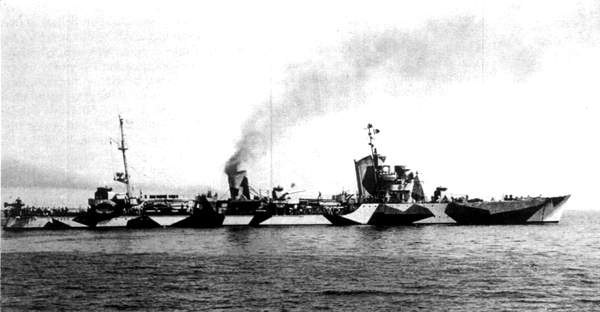
Named after Giovanni da Verrazzano, discoverer of the North American passage, she was laid down at CNQ, Fiume on 17 august 1927, launched on 15 december 1928 and commissioned on 25 July 1930.
From the very start she had a difficult career, entered service late on 25 September 1930 due to many propulsion issues, shipyard modifications to improve stability and training from May 1931 after sea trials. In 1933-1934 under Captain Carlo Daviso di Charvensod she took part in the operations of the Spanish Civil War. In early 1940 she was modified again like her sisters and still under work in June. When completed, she was assigned to DesRon 15 (Pigafetta, da Mosto, Zeno). Until mid-1941 she remained in the Lower Adriatic, assigned to escorts to North Africa and mine-laying missions. From 19 to 23 April 1941, she escored CruDiv 7 to lay the minefields «S 11», «S 12» and «S 13» east of Cape Bon.
Between 23 and 24 April she herself laid mines, same on 1 May northeast of Tripoli, as on 3 June, 28 June («S 2» in the Strait of Sicily), and 7 July. On 12-13 October the operation was cancelled following the departure of the Mediterranean Fleet. From 14 to 16 November she escorted Città di Genova and Città di Napoli from Taranto to Benghazi, and on 1 December, recovered 66 survivors from the AMC Adriatico, sunk by Force K. From January to May 1942 she was overhauled and modernized, and from August 1942, under command of Carlo Rossi, she supplied food to Navarino and to Benghazi wuth troops, then assisted back Da Recco, after engine failure.
On 27 September she was escorting a convoy from Brindisi to Benghazi ambushed at 16.40, by HMS Umbra.
On 17 October from Naples, she was underway to north africa when on 19 October the convoy was attacked by HMS Unbending off Lampedusa, sinking Beppe and another hit her, after fodging a first torpedo. The stern was hit, probably the main aft ammo magazine detonated, severing it entirely. The crew attempted to keep her afloat, but in vain, and she was abandoned and sank at 14:50, with 20 which went down out of a crew of 275, after 148 missions, 42,000 miles.
 Lanzerotto Malocello
Lanzerotto Malocello

Malocello as completed
Lanzerotto Malocello was laid down at Ansaldo, Genoa on 30 august 1927, launched on 14 march 1929, in service by 18 june 1930. The Malocello, although laid down first in the shipyard, was the fifth unit of the class to enter service at the beginning of 1930 as a light scout. After a few months of training she was back at the shipyard for modifications and back to activity on 18 October 1930, assigned to the II Light Division Group and in support of Balbo’s transatlantic air cruise. On 28 June 1935, during a night exercise she collided Zeno. She had 5 deaths and 6 injuries and spent months under repair. In 1936 and 1938 she took part in Spanish Civil War escorts. In 1938 she was in reserve destroyer group, IV Naval Division, and by 5 July 1939 she left La Spezia for Tangier and Leros, then Livorno from 2 January to 31 March 1940 for modifications, joining DesRon 14 (Vivaldi, Noli, Pancaldo), CruDiv 4, II Naval Squadron. She took part in mine-laying missions, convoy escort, attack submarines, recover survivors, shoot down enemy aircraft.
From 30 July to 1 August 1940 she was in indirect escort for two convoys to Libya. On 7-8 January 1941 she laid the minefields «X 2» and «X 3» off Cape Bon and in escort on 22 January to Tripoli, same 5 March, 2-4 April (the co,voy was ambushed by HMS Upright) and searched for the survivors of the convoy «Tarigo». On 4-5 May Naples-Tripoli, 14 July Tripoli-Naples, 13 August Naples-Tripoli (air and sub attacks), 12-13 October minefield mission cancelled.
In November, captain Mario Leoni assumed command and on the 20th November she escorted a convoy from Taranto to Benghazi, 13 December Taranto for operation «M 41» (sub attacks) and 16-18 December operation «M 42» Taranto-Tripoli, convoy «L». 3 January 1942 Naples-Tripoli. 22 January operation «T. 18» Taranto-Tripoli. 21 February operation «K 7» Messina-Tripoli.
On 13 June she left Cagliari (under captain Mario Leoni) to attack the British convoy as part of Operation Harpoon, “Battle of Mid-June”. Vivaldi and Malocello (Zeno was back to engine failure as Gioberti) were found aft of the formation. Malocello in turn had an engine failure and was down to 28 knots, when at 05:38 they were tasked to attack the merchantmen, when targeted by the British destroyers HMS Marne and Matchless from 18,000 meters away. They were also engaged by HMS Badsworth, and ORP Kujawiak and left at 05:59, believing it too well defended.
Malocello approached again and launched a torpedo from 5,800 meters against the Kujawiak, dodged, same by Vivaldi against the transports Troilus and Chant. Next the Italians cocerntrated by gunfore against HMS Marne, hidden under smoke screens. At 06:07 Vivaldi was hit by Matchless, set on fire and immobilised and Malocello provided assistance, trying to smoke out their position which fell at 4,000-5,000 metres. Malocello was soon exchanging fire with HMS Bedouin but at 6.36 the cruiser HMS Cairo and destroyer Ithuriel also opened fire. Captain Ignazio Castrogiovanni on Vivaldi ordered commander Leoni on Malocello to break contact and flee. But the latter instead decided to make a stand, counter-attacking with two torpedoes from 7,000 metres against Cairo, and firing at Ithuriel. Her stand lasted for an hour and a half in close combat until the British retreated. Malocello in the meantime was towed by Oriani, protected by Ascari and Premuda and also assisted Vivaldi, taking in tow at 9:25, attacked en route (mistaken) by 9 SM 84 torpedo bombers, then by British bombers. Malocello released the cables and had to dodge several torpedoes from 2,000 meters away and Premuda took Vivaldi in tow, and she reach Naples. She had spent 329 main batery shells and 4 torpedoes and the crew received a Silver Medal of Military Valor.
From August to December 1942 she was overhauled at La Spezia and received a German radar. Back in January 1943, she was in escort on the “death route” through minefields between Italy and Tunisia, then in fast troop transport from Trapani to Tunis. On 23 March 1943 under command of captain Carlo Rossi she left Pozzuoli with Pancaldo and Camicia Nera to transport German troops to Tunis, Ascari, later joined and became leader. On 24 March under 27 knots, zigzagging, Malocello struck a mine (Abdiel), became dead in the water, listing. Pancaldo and Camicia Nera were ordered to go on and Ascari came alongside to evacuated personal, until a torpedo was detected, forcing Ascari to move away from Malocello. At 8:35 order to abandon ship was given but at 8:45, Malocello capsized, broke in two and sank, 28 miles north of Cape Bon. Rescue was made difficult by the rough seas and Ascari hit mines in turn and sank. More were rescued by MAS from Bizerta and Pantelleria, 96 officers and sailors from both crews, c100 German soldiers out of 650. Commander Rossi and 198 men disappeared at sea. Lt. Adolfo Gregoretti later received the Gold Medal for Military Valor for his actions. She had carried out 149 missions for 61,709 miles.
 Leone Pancaldo
Leone Pancaldo

Named after Leon Pancaldo (a 1400s Genoese explorer) she was laid down at CT, Riva Trigoso on 7 July 1927, launched on 5 February 1929 and entered into service on 30 november 1929. Pancaldo was the second of the class to enter service, and in modifications from May to September 1930. By December she supported Balbo’s transatlantic air cruise and in 1936-1938 the war in Spain.
In 1938 she was assigned to DesRon 16 in La Spezia and Taranto. She was in Pola for CREM crew training, and modified from Oct. 1939 to January 1940 at Muggiano shipyards, completed on 13 January. Based in Taranto, Desron 14, 9 Armored Division, I Squadron under captain Luigi Merini in June 1940, she took part in the Battle of Punta Stilo on 9 July with the V Armored Division with Vivaldi, Da Noli and Pancaldo, left in reserve in Taranto, then called out by Inigo Campioni, reduced to just Vivaldi and Pancaldo but they were too far to operate and returned to Augusta. She was attacked later by three Fairey Swordfish (813th Sqn) from HMS Eagle. Pancaldo was targeted by two, but did not raised alarm when spotted as initially assimilated to Italian aircraft in the air signalled from Catania to Malta. One torpedo misses astern, and the crew was at battle stations, opened fire when the second hit her bow starboard. She veered to the left, bowed and started to sink but AA gunners continued to fire, only stopping then water flooded their positions, the crew launched lifeboats and rafts. The destroyer ended on the seabed at 21:39. Of her crew, 16 went down, and there were 9 wounded. Recovering was done on 26 July 1941 and on 1 August she entered the dry dock for initial repair completed at La Spezia, modernized and fitted with a Gufo radar and assigned to Desron 15 in Trapani on 12 December 1942, 2.5 years after the torpedo attack. By March 1943 she multiplied convoy escort missions, troop transport missions on the Trapani-Tunis route. On 30 April 1943 Pancaldo under command of captain Tommaso Ferrieri Caputi left with German troops to Tunis adn the ex-Greek German DD KMS Hermes when on the morning they were attacked nut missed by five torpedo bombers, then layer an attack from 12 carrier based fighter-bombers at 10, and at 11.30 32 bombers. Hermes was badly hit but managed to reach Bizerta under tow, but Pancaldo lost her engine (3 bomb hits), hull perforated and she sank 2 nm from Cape Bon with her half her crew, 156 men. 124 were rescued. She performed only 13 missions, 6,732 nm.
 Emanuele Pessagno
Emanuele Pessagno

Named after Emanuele Pessagno (Genoese navigator 13/14th cent. supreme commander of King of Portugal fleet), she was laid down at CNR, Ancona on 9 octobre 1927, launched on 12 august 1929 and commissioned on 10 march 1930. The 7th in class she had modifications to improve stability in 1931-32 but also supported support Balbo’s transatlantic air cruise, also in 1932 carrying a representative cruise to Brazil and Argentina with da Mosto. In 1936-1938 she took part in the Spanish Civil War and in 1938 was assigned to Desron 16 in Taranto.
In 1939 she took part in the occupation of Albania, carrying troops. She had more modifications in early 1940 and stayed in her unit with Da Recco, Tarigo and Usodimare. On 12 June 1940 left Taranto, to patrol the Ionian Sea and on 7 July left Taranto to support a convoy to Libya, later joined the I and II Naval Squadron at the battle of Punta Stilo and on 1 August in ASW patrol. She was present during the raid on Taranto on 11-12 October and lightly damaged (hull perforared by shrapnel) and a starboard near miss.
On 28 November and 18 December she shell Greek positions near Corfu. On 26 March 1941 she left Brindisi for operation «Gaudo», and the battle of Cape Matapan. From CruDiv 7 escort, on the raid north of Crete she returned to Gaudo, and covered the withdrawal of Veneto. 19-23, 23-24 1941 April, she took part in minelaying mission on Cape Bon, 1 May northeast of Tripoli, 28 June, July 7, Strait of Sicily and back to escorts on 31 August and 2 September.
On 16 September, she left Taranto with the convoy «Vulcania» for Tripoli ambushed by Upholder, Unbeaten, Upright and Ursula two days later. Pessagno came alongside Oceania to transfer troops, 2000 men and later her crew as she was finished off. 20 October saw her in convoy to Benghazi. On 22 November she rescued Lt. A. J. Griffith, from a downed Fairey Swordfish.
On 16-18 December she took part in operation «M 42» from Taranto to Tripoli, 21 February 1942, operation «K. 7», co-sinking HMS P 38. She met her fate on 29 May 1942 while escorting Capo Arma and Anna Maria Gualdi from Brindisi to Benghazi. She repelled aior attacks on 27 May, but was torpedoed during the night of 28-29 May by HMS Turbulent, four torpedoes were spotted by Pigafetta, alarm, but late evasive action, three hits: Capo Arma and Pessagno at the bow and amidships. She broke in three and sank in a minute off Benghazi, only the commander, an officer, 10 petty officers and 74 sailors were rescued. She had performed 135 missions over 52,463 miles.
 Antonio Pigafetta
Antonio Pigafetta

Named after Antonio Pigafetta, a Genoese sailor and companin of Magellan, she was laid down at CNQ, Fiume on 29 dec. 1928, launched on 10 nov. 1929, 1st may 1931. Pigafetta was the last of her class to enter service, assigned to the 3rd scout Group. She receieved her battle flag on 4 October 1931 in Venice and operated as squadron leader, in 1935, stationed in Leros, Dodecanese, and in support during the Spanish Civil War (1937-1938). Reassigned to Desron 14 in 1938, she was back to the Dodecanese in 1939 with da Verazzano and Zeno, and back home in early 1940for modifications until 27 April. In June she was in Taranto attacjed to BatDiv 9, 1st Sqn, as squadron leader, DesRon 15, including Alvise da Mosto, Giovanni da Verrazzano and Nicolò Zeno. They were detached as the Littorio-class battleships were not yet fully operational, and instead to CruDiv 7, while as flotilla leader she was commanded by Captain Enrico Baroni, later transferred to DesRon 2, dying in the battle of the Espero Convoy.
On 13 June 1940 wit she was in ASW patrol in the Gulf of Taranto, while Da Mosto and Da Verazzano were in modifications. under command of C.V. Paolo Melodia. Until February 1941, Pigafetta was in escort missiones but detached for defensive and offensive minelaying, ezcort of Battleships and Cruisers, 13 escort missions, 2 ASW patrols, 2 naval bombardment missions (Greek campaign), 2 mine laying missions (Strait of Sicily, Strait of Otranto). From 16 February to 5 April 1941 she was modified in Trieste and until the end of August in escort missions and the minelaying sorties S1, S2, S3, S41, S42, S43 and S44 in the Strait of Sicily and near Tripoli, under orders of Enrico Mirti della Valle, until October 1942. She laid mines of Bengazhi but later thei mission off Alexandria was cancelled. From November 1941 to September 1942, Pigafetta had 30 convoy escorts, 6 fleet escorts, 3 transports missions and a mine-laying mission off Marsa Matruh. Her most difficullt was on 27 May 1942 as Pessagno and the steamer Capo Arma were sunk by torpedoes and Convoy D of 17 October 1942, with air and undersea attacks with the loss of several transport and Da Verazzano. She took part in the “Battle of mid-June” with Alpino, the Bersagliere and the Mitragliere, DesRon 13a (Op. Vigorous) to Malta. Pigafetta assisted the crippled cruiser Trento, later sunk by HMS P.35. On 15 December 1941 she made an alone run from Taranto to Benghazi carrying 300 petrol drums (and/or several thousand water bottles for Luftwaffe pilots) in North Africa. One peculiar mission was Operation Aprilia on 15 May 1942. There was a torpedo bomber attack on her convoy, and her aiming system ceased working, she hit by accident the German Reichenfels (minor damage).
From October 1942, under C.V. Rodolfo Del Minio she multiplied high risk missions as the situation degraded in North Africa, yet she emerged unscathed after 7 convoy escorts, 10 mine-laying barrages, 24 troop transports to and from Tunisia and Corsica, and for the invasion of Corsica with suppoer off the port of Ajaccio on 12 November 1942, a rescue mission for the convoy Da Recco after the battle of Skerki Bank on 2 December and 15 transfers, last on 21 June 1943 from Naples to Fiume for major overhaul, still here on armistice day, 8 September 1943 after 213 missions, 70,675 miles. At the time she had received extra AA and a Fumo Radar. She was sabotaged by her own crew in Fiume, most equipment removed and sent in a merchant ship and then cockes open, she sank. She was recovered by the Germans, restored and in service in the 9th Torpedoboote Ausland squadron in 1944 as TA 44. She was limited to the upper Adriatic until sank on February 17, 1945 in Trieste during an Allied air raid. She was BU on 1947.
 Luca Tarigo
Luca Tarigo
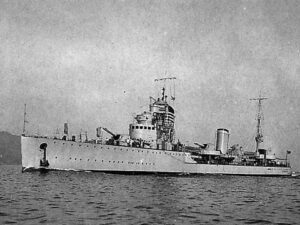 Named after Luca Tarigo, a Genoese navigator of the 14th century which practiced piracy and explored the Sea of Azov, the Don, reached the Volga overland and to the Caspian Sea). She was laid down at Ansaldo, Genoa on 30 august 1927, launched on 9 december 1928, completed on 16 nov. 1929. She probably his the best remembered, most famous of the whole class. First of the class to enter service in November 1929 she experienced all sorts of stability issues that wrote the book for fixes, conformed yby later ships. The first months of exercises made these issues self evident as they rolled badly, to the point it was dangerous to attempt any hard turn in calm seas and most manoeuvers in heavy seas. In anticipation of the use of these scouts in the Balbo raid, she was the first undergoing modifications, in the first cycle, complete by October 1930 and by December she left with her sister units for their Atlantic support mission and back on 18 March 1931, to their assigned port, Gaeta. From 1937 to 1938 she took part in Spanish Civil War escort and patrols, notably of troopships to Spain, blockading Cadiz, Tangier, Ceuta and Malaga and being stationed in Palma de Mallorca. In 1938 she was assigned to Desdiv 16, stationed in Tangier by 19139, ready to operate off the Strait of Gibraltar. In November, Pietro de Cristofaro assumed command, until her loss (see later). In December she was transferred to Rhodes, Aegean Naval Forces Command, until April 1940. Sent to La Spezia she was modified at O.T.O. shipyards, Livorno, completed by 10 August 1940.
Named after Luca Tarigo, a Genoese navigator of the 14th century which practiced piracy and explored the Sea of Azov, the Don, reached the Volga overland and to the Caspian Sea). She was laid down at Ansaldo, Genoa on 30 august 1927, launched on 9 december 1928, completed on 16 nov. 1929. She probably his the best remembered, most famous of the whole class. First of the class to enter service in November 1929 she experienced all sorts of stability issues that wrote the book for fixes, conformed yby later ships. The first months of exercises made these issues self evident as they rolled badly, to the point it was dangerous to attempt any hard turn in calm seas and most manoeuvers in heavy seas. In anticipation of the use of these scouts in the Balbo raid, she was the first undergoing modifications, in the first cycle, complete by October 1930 and by December she left with her sister units for their Atlantic support mission and back on 18 March 1931, to their assigned port, Gaeta. From 1937 to 1938 she took part in Spanish Civil War escort and patrols, notably of troopships to Spain, blockading Cadiz, Tangier, Ceuta and Malaga and being stationed in Palma de Mallorca. In 1938 she was assigned to Desdiv 16, stationed in Tangier by 19139, ready to operate off the Strait of Gibraltar. In November, Pietro de Cristofaro assumed command, until her loss (see later). In December she was transferred to Rhodes, Aegean Naval Forces Command, until April 1940. Sent to La Spezia she was modified at O.T.O. shipyards, Livorno, completed by 10 August 1940.
Now assigned to DesDiv 14, in Taranto, it was then Trapani and Palermo during her escort missions, fast troopships on the Naples-Palermo-Tripoli route and minelaying missions. On 7-8 October 1940, with Vivaldi and Nol the first was off Cape Bon and on 12 October while off Messina she was involved in the battle of Cape Passero and sent to search out for british ships. On 7-8 January 1941 with Vivaldi, Da Noli, Malocello and TBs Vega and Sagittario, she laid «X 2» and «X 3» minefields off Cape Bon, then in escort on the Naples-Trapani route (troop transports Marco Polo, Conte Rosso, Esperia and Victoria) to Tripoli. On 5-7 February, same, and back 9-11 February, then 3-6 March, inc. supples for the Deutsches Afrikakorps. On 1 April this was Naples-Tripoli.
The Tarigo Convoy:
 On 13 April, she left Naples to Tripoli in escort of a convoy formed by the stermers Arta, Adana, Aegina, Iserlohn and Sabaudia, loaded with ammunition, fuel, vehicles, tanks, troops and equipment for the Afrika Korps. She was accompanied by Lampo and Baleno. The night of 14-15, bad weather dispersed the convoy, that was recomposed in around 2:00 AM, when it was spotted by British reconnaissance aircraft. At 2.20 EM, 16 April, the convoy was in sight of Kerkennah shoals on the Tunisian coast when attacked by the destroyers HMS Jervis, HMS Janus, HMS Nubian and HMS Mohawk, all very capable destroyers and an overmatch for the Italians. The battle of Kerkennah saw Sabaudia, Aegina and Iserlohn sunk by the two J-class destroyers, as well as Arta and Adana was badly damaged and managed to reach the shoals to beach themselves. Lampo and Baleno were pitted against the two massive Tribal class, and were absolutely not able to stop them, being reduced to burning wrecks. Their captains, also managed to run to the shoals, enabling most of the crews to escape.
On 13 April, she left Naples to Tripoli in escort of a convoy formed by the stermers Arta, Adana, Aegina, Iserlohn and Sabaudia, loaded with ammunition, fuel, vehicles, tanks, troops and equipment for the Afrika Korps. She was accompanied by Lampo and Baleno. The night of 14-15, bad weather dispersed the convoy, that was recomposed in around 2:00 AM, when it was spotted by British reconnaissance aircraft. At 2.20 EM, 16 April, the convoy was in sight of Kerkennah shoals on the Tunisian coast when attacked by the destroyers HMS Jervis, HMS Janus, HMS Nubian and HMS Mohawk, all very capable destroyers and an overmatch for the Italians. The battle of Kerkennah saw Sabaudia, Aegina and Iserlohn sunk by the two J-class destroyers, as well as Arta and Adana was badly damaged and managed to reach the shoals to beach themselves. Lampo and Baleno were pitted against the two massive Tribal class, and were absolutely not able to stop them, being reduced to burning wrecks. Their captains, also managed to run to the shoals, enabling most of the crews to escape.
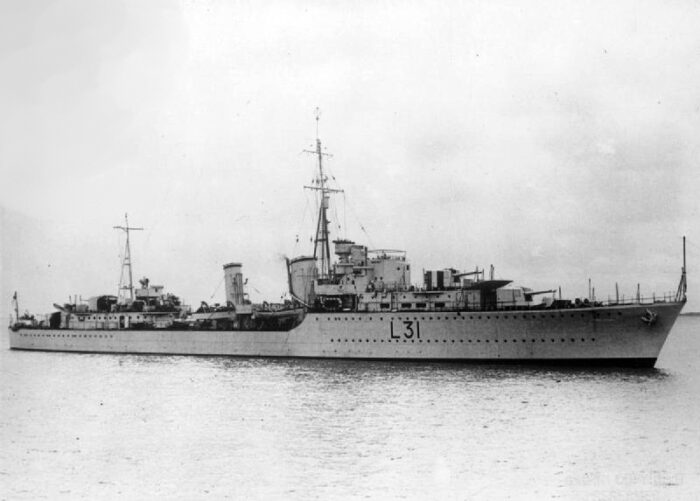
The Tribal class HMS Mohawk, torpedoed by Tarigo. Like her sister Nubian, she was a “battlewagon” designed to counter the UJN destroyersin the far east. They had sixteen main guns between them. Janus and Jervis were a “toned down” versions of the Tribals, and had six each.
The largest and best destroyer was of course Tarigo the lead ship and at the head of the convoy, only capoable to see the British destroyers attacking the convoy by the tail. She was was the last to be attacked, reversing course mid-way in the engagement, opening fire, and and finding itself soon alone to counterattack the four enemy destroyers. That was a questionable decision tactically to say the least, and 41 years old Cristofaro, having seen the entire convoy shred to bits, estimated this was probably the best and only course of action given the circumstances. His idea was probably to be close enough to launch torpedoes, whatever the odds. The whole crew was perfectly aware of what laid before them. While maneuvering, Tarigo, spared serious enemy fire until then, was hit just under the bridge. Commander De Cristofaro was mortally wounded, loosing a leg and many other in his staff killed or wounded. This was just the start, the steering and transmission systems were destroyed, and the aft steering system was activated. De Cristofaro, still conscious at the time, continued to direct operations, and Tarigo, under more accurate and punishing fire, came within a few hundred meters, point-blank of the four destroyers capable of full broadside (28 guns versus 6 on Tarigo) and she was soon on fire from stem to stern, all armament put out of action, all crew on deck and in the superstructures and within the hull dead or wounded. Her powerplant shattered, all steam pipes burst open, turbines and boilers gutted by shrapnel.
Chief engineer Luca Balsofiore, blinded by a shot, was carried on deck to dy next to De Cristofaro after telling him his ship was now dead in the water. A group of survivors led by lieutenant Ettore Besagno, reached the only working torpedo launcher still manually workable, and torpedo officer Adriano Marchetti, wounded and soon killed, aimed and launched three torpedoes: Two hit the approaching HMS Mohawk which came to for a closer look on a seemingly wrecked ship. Mohawk had had no tme to dodged these and was torn open with 43 dead and many more wounded. She was so crippled that she was later evacuated and scuttled.
After Tarigo went silent and the remaining destroyers being budy assisting Mohawk, Commander De Cristofaro ordered survivors to try to put out the fires, but the ship was listing quickly anyway and gave the order to abandon ship, dying afterwards, left in the bridge when Tarigo went to the bottom at 3:00 AM the morning on 16 April, 500 m south of buoy no. 3, Kerkennah shoals. De Cristofaro, 7 other officers (3 survivors +36 of the crew) and almost all of the crew went down and De Cristofaro and chief engineer Balsofiore both were posthumously awarded the Gold Medal for Military Valor. De Cristofaro had gave his name to a class of corvettes in the 1950s and is still a revered figured in today’s Marina Militare. Tarigo completed 30 missions over 18,000 miles. Her wreck was located in 1950-1951 and surveyed by Minio Contivecchi Recuperi, partially dismantled to recover metals.
 Antoniotto Usodimare
Antoniotto Usodimare
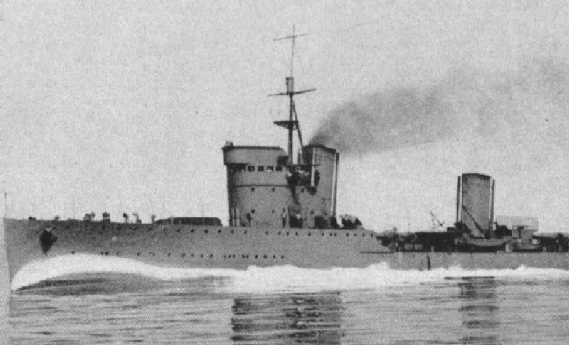
Usodimare on sea trials in 1929.
Named after Antoniotto Usodimare was named after Genoese navigator born 1416, exploring the west coast of Africa for Henry the Navigator of Portugal. She was laid down at Odero, Sestri Ponente, on 1st June 1927, launched on 12 May 1929 and commissioned on 21 november. Usodimare was the 6th of the class to to be completed on November 1929 as light scout, undergoing modifications to improve stability and in December 1930 supporting Balbo’s air cruise, visiting Brazil. On 10 August 1934 she was rammed by the steamer Pallade off Procida (2 kills, repairs) and took part in the Spanish Civil War, see above for details. In 1938 she was assigned to DesRon 16 in Taranto. From December 1939 to April 1940 she was based in Leros, Aegean Command with Recco and Tarigo. She never had the second round of modifications and maintained her original configuration. With Recco, Tarigo and Pessagno on 12 June 1940, she left Taranto, to support the 1st Division (Zara class), 8th Division (Duca degli Abruzzi class) DesRon 9 (Alfieri, Oriani, Gioberti, Carducci) for a sweep in the Ionian Sea. On 7 July 1940, she left Taranto with CruDiv 4 (da Barbiano, Alberto di Giussano, Cadorna and Diaz) and CruDiv 8 for a convoy of troop transports to Libya. With the I and II Naval Squadrons she took part in the battle of Punta Stilo on 9 July and later took part in sucessful ASW hunt. On 1 February 1941 she was damaged ater a collision with the Viminale. On 3 June 1941 she laid two minefields northeast of Tripoli and on 31 August-2 September escorted a return conviy from Tripoli to Taranto. On 16 September she escorted the convoy «Vulcania» for Tripoli (U-class ambush) and rescued many men and troops.
On October 2, this was Naples-Tripoli (Rialto sunk). On 16-19 October another Naples-Tripoli (5 transports, Beppe torpedoed by HMS Ursula, Caterina later sank, air attack).
On 12 December, this was Messina-Taranto-Tripoli «M 41» and convoy «A», attacked off Taranto by HMS Upright.

On 16 December she was attached to DesRon 10 to escort the battleships Andrea Doria, Giulio Cesare and Littorio, cruisers Trento and Gorizia and 9 DDs in indirect escort, for operation «M 42» a dual convoy. She was not part of the inconclusive first battle of Sirte on 17 December 1941. On 3 January 1942 she left Messina to Tripoli, operation «M 43». On 18 January she protected the large tanker Giulio Giordani from an air attack. On 21 February in operation «K. 7» she left Corfu and arrived in Tripoli. On February 23 Circe spotted HMS P38, and seriously damaging her, finished off by Usodimare and Pessagno.
Usodimare was the only Italian destroyer lost in a tragic friendly fire, a 2:00 AM on June 8, 1942. She had left Naples to escort Vettor Pisani to Tripoli and they joined another convoy for Libya. But they crossed the path of the submarine Alagi, just arrived at her ambush sector 20 miles north of Cape Blanc. She had not being informed of the convoy route and believing it to be British, launched three torpedoes against the closest escort in order to then finish off the convoy. These met Usodimare. The first torpedo hit at 21.20, she broke in two and sank in five minutes, 72 miles north of Cape Bon, leaving 165 survivors. She managed to make 113 missions over 41,972 miles.
 Ugolino Vivaldi
Ugolino Vivaldi

Named after Ugolino Vivaldi, 2 brothers and Genoese explorers and merchants best known for their attempted voyage from Europe to India via Africa, she was laid down at Odero, Sestri Ponente, on 16 May 1927, launched on 9 June 1929 and completed on 6 march 1930. Vivaldi was the 6th in class, immediately modified to improve stability and joined the I Scout Division Group, supporting Italo Balbo’s air cruise to Brazil and operations during the Spanish Civil War, new modifications in 1938 (first) as she was reclassified as a destroyer, assigned to DesRon 14, II Naval Squadron. In 1939 she supported the operations for the conquest of Albania and in June 1940 was the leader her Squadron based in Taranto with da Noli, Pancaldo and Malocello, under Captain Giovanni Galati until 1942.
She took part in the battle of Punta Stilo on 9 July 1940, held in reserve in Taranto and called for replacement, but arrived too late, and at 16:28, the squadron commander decided to give up the torpedo attack because as the British were away. Howevr Vivaldi was attacked by air, dodged two torpedoes. She returned to Augusta to refuel and by July 10, attacked by three British torpedo bombers. One torpedo miss, another sank Pancaldo. On 1 August she left Augusta with Noli, Pessagno, Usodimare and Recco in ASW patrol, spotting a sub 12 miles south of Capo Spartivento, HMS Oswald. She charged, launched depth charges, forced her to surface, and rammed her, sinking her at 23:05 but also rescued 52 of her 55 crew. She was back to Taranto in September for repairs after for a month or drydock repairs. On 7-8 October she laid a minefield off Cape Bon and on 12 October, left Messina wit CruDiv 3 in what became the clash at Cape Passero. On 7 November, she was setn in intercept with Da Noli and Malocello but could not locate the reported ships.
On 7-8 January 1941, she laid the minefields «X 2» and «X 3» off Cape Bon and from 22 January, was in escort on the Naples-Trapani route, same on 1-3 March on Tripoli-Naples, 5 March, Naples-Palermo-Libya, then 2-4 April, Tripoli-Naples, 12 April from Tripoli back. She rescued survivors of the convoy «Tarigo» on 16 April. On 4-5 May Naples-Tripoli, on 26-28 May Naples-Tripoli, on 7 June to 4 August she was in dockyard maintenance in La Spezia. On 13-15 August Naples-Tripoli. On the 14th she repelled heavy air attacks, having a gun accidentally exploding so she was diverted to Benghazi and later she was attacked by a submarine, dodged tow torpedoes, went to the sourced and dropped depth charges and observed air bubbles, pieces of wood and diesel fuel rising to the surface. Thius kill was never confirmed. She also claimed dowining 4 British torpedo bombers but lost 3 men and 6 injured by strafing.
On 19-21 August, Naples-Tripoli she repelled two submarines but latter one ship was sunk by HMS Unbeaten and HMS Unique the Esperia, and she rescued their crews. On 12-13 October her minelaying misson was cancelled. She was relocated to Taranto.
On November 21, 1941, she was in escort to Messina, and Libya. Same in 13 Decemberfrom Taranto in operation «M 41», marred by attacks by submarines, damaging the Vittorio Veneto, two merchantmen, sunk. On 16-18 December this was operation «M 42» (Taranto-Tripoli) and on 3-5 January 1942, Messina for operation «M 43» to Libya.
On 22-23 January, operation «T. 18» Taranto-Libya and on 21 February operation «K 7» Messina-Tripoli. On 13 June from Cagliari under command of Captain Ignazio Castrogiovanni with Crudiv 7 she took part in the Battle of Mid-June. At 05:54 Vivaldi and Malocello were targeted by the destroyers HMS Marne and Matchless from 18,000 m away and the Italians targeted and claimed hits on HMS Badsworth, and ORP Kujawiak, Vivaldi closed and launched two torpedoes from 5,800 meters but missed and withdrew. But at 6:07 Vivaldi was hit by Matchless and a fire broke out, which soon spread throughout the central area while speed dropped and at 6:22 she was stopped but Malocello provided assistance and defended her from more attacks from 4,000-5,000 meters, covering her with smoke screens. Vivaldi while the teams prevented more damage, continued to fire. Later HMS Cairo, Ithuriel and Matchless closed further and commander Castrogiovanni, sent the message «I will fight to the last. Long live the King». But commander Leoni (Malocello) refused to abandon him, launched two torpedoes on HMS Partridge, which retreated. After 1.5h of close combat the RN destroyers and Cairo, low on fuel, retreated. At 6:46 the Vivaldi restarted a boiler after a nine hours battle against fire. She restarted a generator and boiler unharmed and managed to mimp out to Pantelleria assisted by Malocello, joined by Oriani, Ascari and Premuda, then MAS 557, 563 and 564. She was eventually taken in tow by Malocello, but they were attacked by 4 Fairey Albacore torpedo bombers and later by mistake, by 9 Italian SM 84 bombers. Malocello released the cable to dodge all torpedoes and Vivaldi was taken in tow by Premuda until she was in Scaura, Pantelleria where its last fires were put down and repairs commenced. During the fighting she spent 300 main guns shells andhad 10 KiA but later 24 with the ones seriously burned in the next days.
Repairs lasted until May 1943 near Naple and she was modernized. On 10 July she was attacked by torpedo bombers, but dodged them. On 7 September she was La Spezia for further repairs, while under command of Captain Francesco Camicia and she departed, armistice oblige, with Da Noli to Civitavecchia, to embark King Vittorio Emanuele III from Rome to Pescara. Vivaldi and Da Noli on 9 September were ordered to La Maddalena, to join the fleet from La Spezia. They were then ordered westward, sinking all spotted German vessels between Sardinia and Corsica. Off Razzoli, Bonifacio, in the evening they stumbled upon German patrol boats and motor launches, sinking or damaging the ones that did not retreat but were targeted by coastal batteries of Corsica. Vivaldi was repeatedly hit and damaged, with a fire and engines out of action. She ended south of Cape Fenu while Da Noli, also hit by batteries, while manoeuvring to move away hit a mine and sank. Vivaldi around 19:00 was able to restart one boiler and limped at 10 knots, away, until attacked by German Dornier Do 217 bombers at 20:00. Her AA was powerless to prevent one to drop at a distance her new Henschel Hs 293 radio-guided bomb that hit her. At midnight she was started to list, agains dead in the water. She was repaired in the morning and able to proceed, and on 10 September, passed the Asinara, but the list augmented and order was given to abandon ship and scuttle her, with lt. cdr Alessandro Cavriani and chief mechanic Virginio Fasan, returning on board to hasten the scuttling and went down with the ship some 50 miles west of the Asinara. Survivors of Vivaldi were spotted by a German seaplane which recovered 23 survivors, POWs in Corsica and then three other German seaplanes but they were short down by US aircraft. On 11 September more were rescued by a German patrol boat and others by an US seaplane, then 44 more survivors by HMS Sportsman on the 12th, 7 men on 16 September by the motorboat MZ 780, and 89 reached Spanish territory, 240 total, 58 went had been killed. She had performed 155 missions for 59,991 miles.
 Nicolò Zeno
Nicolò Zeno

Named after Nicolò Zeno, which in the 14th century explored the North Atlantic, reaching the Svalbard Islands. She was laid down at CNQ, Fiume, on 5 june 1927, launched on 12 august 1928
and completed on 27 May 1930. Zeno was the first in class built by Cantieri del Quarnaro in Fiume and initially had issues about the reliability of the Belluzzo turbines delaying her entry into service. She underwent modifications to improve stability from 7 October 1930 under captain Bruno Brivonesi. Se received her battle flag in Viareggio on 4 October 1931. On 28 June 1935, during a night exercise she collided with Malocello and spend several months under repair. In 1936-1937 she supported operations during the Spanish Civil War.
In 1938 she was assigned to DesRon 15, stationed in Leros with Pigafetta and Da Verazzano, then back home for extra modifications, back in service by May 1940, attacjed to CruDiv 7 with Pigafetta, da Mosto and da Verrazzano, sent in escort like on 7 July 1940, to Libya but she developed mechanical troubles. She was not engaged in the battle of Punta Stilo on 9 July.
From 30 July to 1 August she was in indirect escort for two convoys to Libya. On 6 August with Pigafetta, the cruisers Da Barbiano and Di Giussano, she laid a minefield off Pantelleria but was in repairs until November. From 19 to 23 April 1941 she laid the minefields «S 11», «S 12» and «S 13» east of Cape Bon as well as on 23-24 April, 1 May northeast of Tripoli and on 4-5 May was on indirect escort for a convoy Naples-Tripoli in which she and Pigafetta spotted and attacked a submarine, possibly sinking HMS Usk (or mine).
On 20 October she was in troop transport to Benghazi with Da Noli and Pessagno and while back on the 21th unsuccessfully attacked by a submarine north of Benghazi.
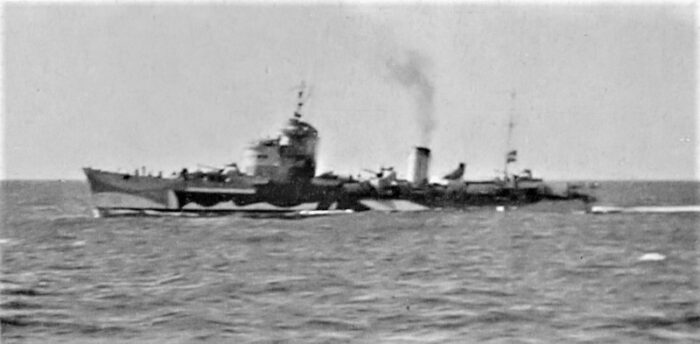
In November she was the first to receive the new “claudus” camouflage scheme, maintained until beyond mid-1942, then replaced by the official camouflage with broken lines in dark gray.
On 20 November, she escorted Città di Palermo and Città di Tunisi from Taranto to Benghazi with Malocello and Partenope , 13 December, she departed from Taranto in indirect escort group for operation «M 41», on 16-18 December operation «M 42», on 21 February 1942 operation «K 7» Messina-Tripoli, on 13 June from Cagliari to counter Operation Harpoon but not implicated in the Battle of Mid-June, due to engine failure. She had her AA reinforced meanwhile. On 4-7 October she left Brindisi to Benghazi. From 28 to 30 November she carried 86 tons of petrol to Benghazi and by February 1943, laid the minefield «S 62». On 28 February after laying «S 10», her sqan. was attacked by a submarine and rammed by da Noli, after a rudder failure. She was seriously damaged but returned to port under her own power, but returned to service. Stranded at La Spezia for repairs, she was still there when the armistice was proclaimed. On 9 September she was scuttled by her crew. Part of the superstructure and artillery still emerged when the Germans captured the port. She was never refloated not repaired, BU postwar.
She performed 182 missions over 57,856 miles.
Read More/Src
Books
Erminio Bagnasco e Enrico Cernuschi. Le navi da guerra italiane 1940-1945. Parma, Ermanno Albertelli Editore, 2005
Ando, Elio (1978). “The Italian Navigatori Class, 1928”. In Preston, Antony (ed.). Super Destroyers. Warship Special. Vol. II. Conway.
Brescia, Maurizio (2012). Mussolini’s Navy: A Reference Guide to the Regina Marina 1930–45. NIP
Campbell, John (1985). Naval Weapons of World War Two. NIP
Fraccaroli, Aldo (1968). Italian Warships of World War II. Shepperton: Ian Allan.
Roberts, John (1980). “Italy”. In Chesneau, Roger (ed.). Conway’s All the World’s Fighting Ships 1922–1946.
Rohwer, Jürgen (2005). Chronology of the War at Sea 1939–1945: The Naval History of World War Two (3rd. rev. ed.).NIP
Shores, Cull & Malizia (1991). Malta: The Spitfire Year 1942. Grub Street.
Smigielski, Adam (1995). “Italy”. In Chumbley, Stephen (ed.). Conway’s All the World’s Fighting Ships 1947–1995.
Whitley, M. J. (1988). Destroyers of World War 2: An International Encyclopaedia. NIP
Cernuschi, Enrico (2022). “Esploratori of the Regia Marina, 1906—1939”. In Jordan, John (ed.). Warship 2022. Oxford: Osprey.
Links
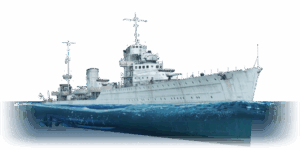 on navypedia.org/
on navypedia.org/
navweaps.com/ Italian guns
navweaps.com 47mm/45 m1918
web.archive.org danieleranocchia.it
en.wikipedia.org/ Navigatori-class destroyer
it.wikipedia.or /Classe Navigatori
regiamarinaitaliana.it/ Navigatori.html
italiandestroyers.com.ar navigatori.htm
regiamarina.net engagements tarigo
comandosupremo.com navigatori-class
uboat.net class
italiandestroyers.com navigatori.html
reddit.com Warship Porn navigatori
navweaps.com WAMIT_ASW.php
Model Kits
on modelwarships.com/ vivaldi-700-rm/
on scalemates.com Ex: Navigatori Class by Doggy Industries 1:700, Antonio da Noli by U-Boat-Laboratorium 1:700
WoW close views of Luca Tarigo
3D
Video


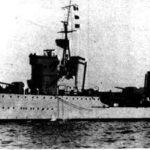



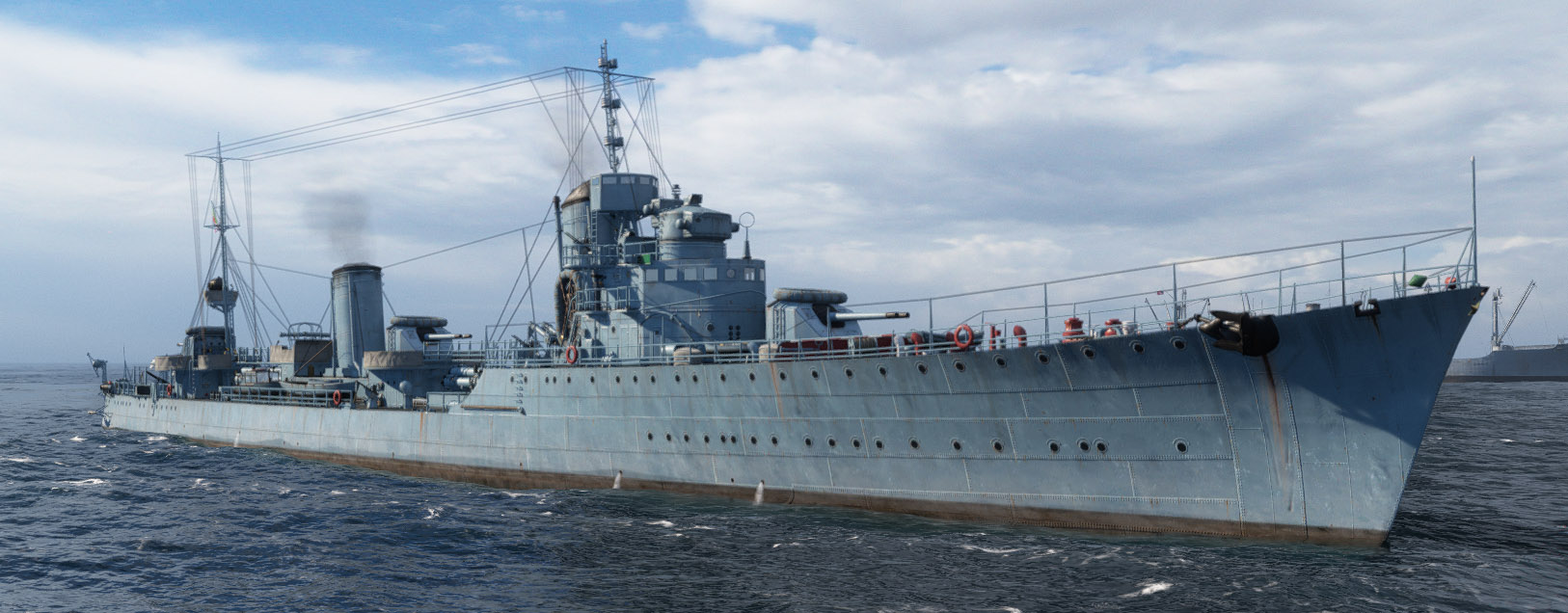





 Latest Facebook Entry -
Latest Facebook Entry -  X(Tweeter) Naval Encyclopedia's deck archive
X(Tweeter) Naval Encyclopedia's deck archive Instagram (@navalencyc)
Instagram (@navalencyc)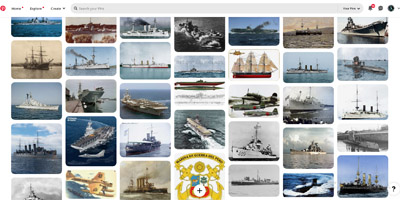

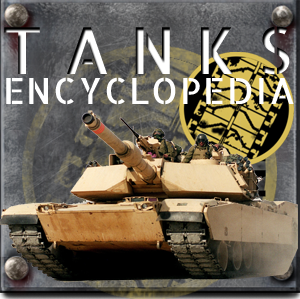
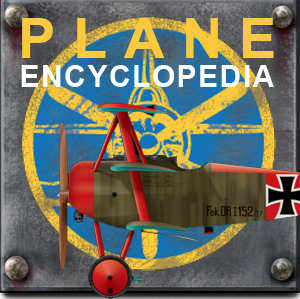
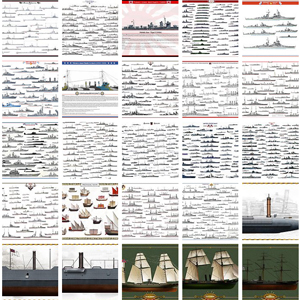
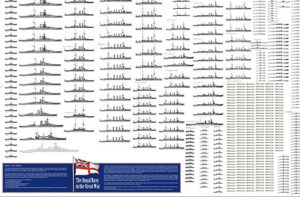
 French Navy
French Navy Royal Navy
Royal Navy Russian Navy
Russian Navy Armada Espanola
Armada Espanola Austrian Navy
Austrian Navy K.u.K. Kriegsmarine
K.u.K. Kriegsmarine Dansk Marine
Dansk Marine Nautiko Hellenon
Nautiko Hellenon Koninklije Marine 1870
Koninklije Marine 1870 Marinha do Brasil
Marinha do Brasil Osmanlı Donanması
Osmanlı Donanması Marina Do Peru
Marina Do Peru Marinha do Portugal
Marinha do Portugal Regia Marina 1870
Regia Marina 1870 Nihhon Kaigun 1870
Nihhon Kaigun 1870 Preußische Marine 1870
Preußische Marine 1870 Russkiy Flot 1870
Russkiy Flot 1870 Svenska marinen
Svenska marinen Søværnet
Søværnet Union Navy
Union Navy Confederate Navy
Confederate Navy Armada de Argentina
Armada de Argentina Imperial Chinese Navy
Imperial Chinese Navy Marinha do Portugal
Marinha do Portugal Mexico
Mexico Kaiserliche Marine
Kaiserliche Marine 1898 US Navy
1898 US Navy Sovietskiy Flot
Sovietskiy Flot Royal Canadian Navy
Royal Canadian Navy Royal Australian Navy
Royal Australian Navy RNZN Fleet
RNZN Fleet Chinese Navy 1937
Chinese Navy 1937 Kriegsmarine
Kriegsmarine Chilean Navy
Chilean Navy Danish Navy
Danish Navy Finnish Navy
Finnish Navy Hellenic Navy
Hellenic Navy Polish Navy
Polish Navy Romanian Navy
Romanian Navy Turkish Navy
Turkish Navy Royal Yugoslav Navy
Royal Yugoslav Navy Royal Thai Navy
Royal Thai Navy Minor Navies
Minor Navies Albania
Albania Austria
Austria Belgium
Belgium Columbia
Columbia Costa Rica
Costa Rica Cuba
Cuba Czechoslovakia
Czechoslovakia Dominican Republic
Dominican Republic Haiti
Haiti Hungary
Hungary Honduras
Honduras Estonia
Estonia Iceland
Iceland Eire
Eire Equador
Equador Iran
Iran Iraq
Iraq Latvia
Latvia Liberia
Liberia Lithuania
Lithuania Mandchukuo
Mandchukuo Morocco
Morocco Nicaragua
Nicaragua Persia
Persia San Salvador
San Salvador Sarawak
Sarawak Uruguay
Uruguay Venezuela
Venezuela Zanzibar
Zanzibar Warsaw Pact Navies
Warsaw Pact Navies Bulgaria
Bulgaria Hungary
Hungary

 Bundesmarine
Bundesmarine Dutch Navy
Dutch Navy Hellenic Navy
Hellenic Navy Marina Militare
Marina Militare Yugoslav Navy
Yugoslav Navy Chinese Navy
Chinese Navy Indian Navy
Indian Navy Indonesian Navy
Indonesian Navy JMSDF
JMSDF North Korean Navy
North Korean Navy Pakistani Navy
Pakistani Navy Philippines Navy
Philippines Navy ROKN
ROKN Rep. of Singapore Navy
Rep. of Singapore Navy Taiwanese Navy
Taiwanese Navy IDF Navy
IDF Navy Saudi Navy
Saudi Navy Royal New Zealand Navy
Royal New Zealand Navy Egyptian Navy
Egyptian Navy South African Navy
South African Navy






























 Ukrainian Navy
Ukrainian Navy dbodesign
dbodesign